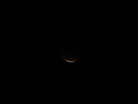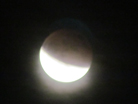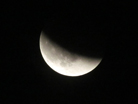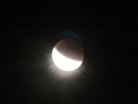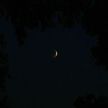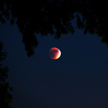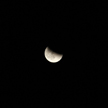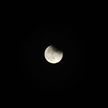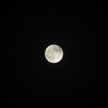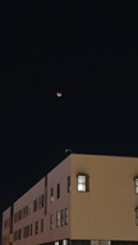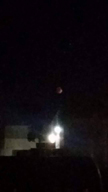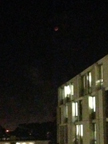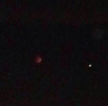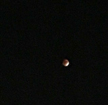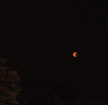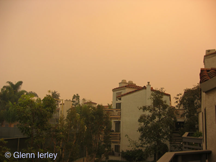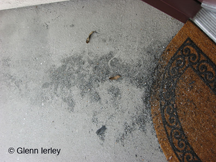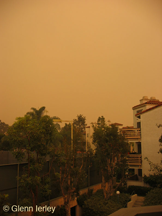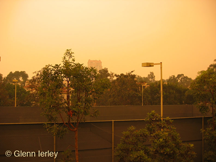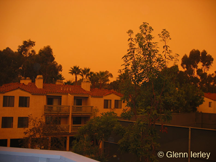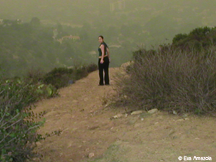Student Photos and Eye Witness Accounts |

|
LAST UPDATE: 06 December 2024
POSTED: 11 September 2020
| This page hosts photos collected by SIO15 students and instructors, and other folks interested in natural disasters. Contributions are welcome and will be posted ASAP! Please send photos to Gabi at glaske@ucsd.edu with a short paragraph on what/where/when. If you don't have a photo but a good story to tell, send a short paragraph. |
|
December 5, 2024: 2023 Hurricane Hilary In August of 2023, there was a hurricane that was headed straight for Southern California for the first time in many Southern California resident’s lifetimes. Hurricane Hilary deeply affected my family, with heavy rainfall and unprepared city planning leading to intense flooding in my house and around it. This flooding meant my entire family’s day was dedicated to fighting a hurricane and utilizing every bucket, tarp, and even empty trash bin to scoop out water to keep water from getting more into my house. As I fought against the rain I continuously got drenched to the point where I’d have to change my clothes to prevent myself from being sick. At the end of the day, my first experience with a hurricane was a memorable and chaotic experience damaging both my family’s health and my house. (Daniel Guerrero, SIO15 student, 2024) |
|||||||||||
|
December 3, 2024: 2023 Hurricane Hilary I have a bad habit of never cleaning my car. In the summer of 2023, I remarked that I'd wait for it to rain. My friends laughed under the trademark SoCal clear skies and shining sun, but it wasn't long before a storm came. Hurricane Hilary changed the way I viewed hurricanes. I had always viewed them as some distant threat that Californias were separated from, but Hurricane Hilary proved me wrong. Where I lived in Orange County the weather wasn't too severe, just a lot of rain and some flooding. Managing the storm only consisted of us comforting our two small dogs and 5 year old sister. But in San Diego, things were worse. Due to the quarter system I hadn't come down to San Diego yet. But, my brother lived here and so did my friend Ava from high school. No damage was permanently done, and everyone was safe. But both my brother and friend were not able to go outside or drive on the road because of Hilary. Ava had to attend her first day of her first year of college at SDSU on Zoom, and had a major stepping stone permanently altered. And my brother, who was working two full-time jobs at the time, did not have much prepared food in his apartment, so he was peripherally concerned about not having access to roads for restaurants/drive throughs/door dash. Since Hurricane Hilary, I learned to pay more attention to weather warnings. (Anabelle Taylor, SIO15 student, 2024) |
|||||||||||
|
November 22, 2024: 2015 California Tornado I remember it being a freezing cold day driving back from the store with my mom and brother on November 16, 2015. Little did I know that I was about to witness my first-ever tornado experience in action. As my mom was driving, we saw this huge grey funnel-like shape spinning in the distance. As an eleven-year-old, I had little to no knowledge of tornados and the damage that they could cause. Thankfully when this hit in Denair, California a (small and I mean small) town in the valley, it was categorized as an EF-1. We were driving towards it, although not too close, and I remember being fascinated to see this “funnel-like” tornado spin in action with particles going around and around. The news stated that winds were around eighty-six miles per hour. I think that we were all shocked because, in Stanislaus County, a tornado was uncommon. It was rare, and I mean rare that something like this would occur. We made it to our destination safely and the next day we decided to go into Denair and drive by to see the damage. There were trees and powerlines down, roofs coming off some of the houses, an old church fully damaged, and more. Thankfully as an EF-1, this was not the worst kind of tornado, however, structures and homes were left damaged. This rare instance of a natural disaster in Stanislaus County was one I will never forget as it was my first time and hopefully, only time witnessing it. I found it interesting that the tornado went through the town and only affected certain parts. You could drive streets and see damage from left to right, but then a couple of streets over it appeared that nothing had ever happened. (Lexy Lockmiller, SIO15 student, 2024) |
|||||||||||
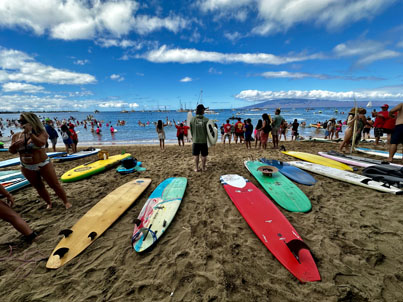 view larger image |
October 24, 2024: 2023 Maui Wildfire On Thursday, August 8, 2024, Hanaka'ŌŌ Beach Park in Lahaina, Maui, Hawai'i hosted a paddle out in honor of the one year anniversary of the Maui Fires that engulfed the historic town of Lahaina, killing more than 100 locals. My dad grew up in Hawai'i and my grandparents still live there in Kā'anapali, the neighboring town of Lahaina and were there when the fires were happening. I will never forget how worried my family was when my grandparents had no connection and the only knowledge we had on the fires, and if it was reaching my grandparents town, was coming from the news. Although they were okay and Kā'anapali was not touched, the memories we built as a family in Lahaina were taken in the blink of an eye and the once beautiful town was nothing but ash. It meant a lot for my family to be there for the paddle out to support the locals who lost their homes and families and so much cultural history that is forever perished from these fires. Maui Strong. (Kiana Halland, SIO15 student, 2024) |
||||||||||
|
October 24, 2023: Severe Weather in Ohio I was about six years old, visiting my aunt in Ohio. I am from San Jose, CA, so this was one of my first trips across the country. My aunt and uncle had planned a trip for my siblings and me to go to a waterpark in Sandusky, Ohio. It was a two-hour drive to the waterpark, and I was more than ecstatic. My brother and sister, both older than me, were also excited. After about two hours of being at the waterpark, my uncle took me to go to the bathroom. We separated ourselves from the family to go to the bathroom, and as we were about to return to them, we started to hear loud sirens and horns. Immediately, in the crowded indoor waterpark, hundreds of people started running and screaming. My uncle, having lived on the East Coast for decades, already knew what this meant - a tornado was coming our way. He immediately picks me up and starts running with me, frantically looking for the rest of our family. I was in shock - I didn't know what to do or how to react, but I knew that I was scared to death. Eventually, after 30 minutes of running around and screaming for our family members' names, we met up with them. My uncle wanted to try to drive away from the tornado before it reached the ground. I'll never forget the true terror I felt when we were driving away from the waterpark and could physically see the tornado forming in front of us. This was our sign to immediately turn back and find shelter. Luckily, the waterpark was shoving people into their basement, and we found shelter there for a couple of hours. We made small talk with the people around us and just waited around until eventually, it passed. I was happy to learn that the tornado never reached the ground, but I will never forget this experience, especially as someone who grew up on the West Coast. I wanted to share this story as my own personal experience with a natural disaster, in light of everything we have been learning in the class. I feel as if this topic tends to be brushed over, as many people have never truly experienced raw fear in the face of a natural disaster. (Derek Tran, SIO15 student, 2023) |
|||||||||||
|
October 2, 2023: 2023 Typhoon Doksuri I traveled back to Beijing over the summer break of 2023, and Beijing started to experience heavy rainfall due to Typhoon "Dusuri" (also called Doksuri). The rainfall has been identified as the “most severe rainfall in 140 years”. In the Mentougou district, the rainfall was particularly severe which causes floods. One community in Mentougou district got flooded over and got mud in people’s homes. When the flood came, people could not open their windows at home, as well as leaving home. All the cars parked on the street have been damaged as well. The flood level has risen to ground level with mud flooding all over the place. Another community even lost connection to the rest of the public, and plenty of rescue is needed. I heard there were two fatalities from this disaster. (Cecilia Fan, SIO15 student, 2023) |
|||||||||||
|
December 6, 2022: 25 April 2015 Gorkha, Nepal Earthquake It was the 25th of April, 2015. I used to live in Patna, a city in Northeastern India at that time. That morning I was home alone with my sibling. And suddenly the earth started shaking vigorously. I saw things in our home shaking and vibrating. We had been taught about earthquakes and what to do during them at school. Realizing that it was an earthquake, I worriedly picked my little sibling up and started heading down the stairs taking care not to use the elevator. Living on one of the upper levels of a tall building, it took a while to get down to the ground floor into the open. While on our way down it almost felt like the building was being bent into two just like an eraser would. But we were able to make our way down into an open field where others had collected too. We stayed there until the tremors stopped to protect ourselves in case there were any loose things that'd fall as debris. Thankfully our building wasn't destroyed and neither were there huge damages to our building but I do remember hearing that other buildings in our city had gotten cracked and some even toppled. This earthquake had its epicenter in Nepal with a magnitude of 7.8 Mw and a depth of 15 km (a shallow earthquake which is more damaging) and the shock waves were felt in other states such as the one I lived in which borders Nepal. (Areebah Hoda, SIO15 student, 2022) |
|||||||||||
 view larger image |
October 21, 2022: August 2022 Severe Drought in Chongqing, China In August every year, it is traditionally the flood season in Chongqing, China. However, this year was different. Since the beginning of August, there has been almost no rain in Chongqing for a month, and the temperature has reached a maximum of 45 degrees Celsius. I have never experienced such high temperatures before. Even with the air conditioner running at its maximum speed, you still can feel the heat coming in from the outside of the window. The water level of both the Long river and Jialing river plummeted, the river surface almost dried up, and the riverbed appeared. People can literally walk to the middle of the Jialing river. I walked on the riverbed, which it used to have a water level at about at least the height of 7 people. The city's 66 rivers stopped flowing, 25 reservoirs dried up, 2138 electromechanical wells had insufficient water output, and 34 districts and counties suffered drought disasters, that cumulatively affected a population of 889,000. (Zhen Yang, SIO15 student, 2022) |
||||||||||
 view larger image |
September 26, 2022: August 21, 2022 Beibei Jinyun Mountain Fire This summer, I traveled to Beibei District, Chongqing, where my best friend lives, and saw the wildfire for the first time. At 22:30 on August 21, 2022, a mountain fire broke out in Jinyun Mountain, Beibei District, Chongqing, China. Then Beibei District organized an emergency rescue team of more than 500 people to put out the fire. We became volunteers to deliver supplies and clean the rubbish on the mountain. Although the slopes were steep and conditions were harsh, people all stuck together to make a contribution. I experienced how natural disasters influenced human life and our living environment. By 8:30 on August 26, all fires at Beibei District and Bishan District were put out by “backfire". According to official statements, Chongqing has experienced temperatures above 40 degrees [C] in numerous places for more than 20 days. The recent frequent mountain fires in Chongqing are mostly due to the spontaneous combustion of the forest brought on by the extremely hot weather. Another reason is that the civil power line broke and caught fire under the high temperature and strong wind. This image depicts the condition of Jinyun Mountain in Chongqing's Beibei District on the evening of August 25. (Xinyi Wu, SIO15 student, 2022) |
||||||||||
 view larger image |
December 11, 2020: 2020 Torrential Rain in China I was in Jiangsu, a southern providence of China, when unprecedented heavy rainfall continued for over a month since mid-June 2020. After days of torrential rain, local rivers and lakes, such as the grand canal, had risen or even passed the alert level in my city, Wuxi. Therefore, flood warnings and watches were in effect, and the government reacted immediately. However, the exceeding rainfall still affected people’s daily lives because the sewage system failed to timely drain off water. As a result, communities in low-lying areas were flooded, and thousands of people were not able to go to work or school because the roads were flooded and because their vehicles might have been damaged by water. The first picture was a screenshot from a video that captures the moment when a large amount of rain poured into the basement of a residential building. As you can see in the second image, the rain collected in the tunnel in the morning after a night of significantly heavy rainfall, and several cars were trapped in there. (Xena Huang, SIO15 student, 2020) |
 view larger image |
|||||||||
 view larger image |
December 11, 2020: Alaskan Supervolcano I came across a tweet from National Geographic the other day saying that several islands along the coast of Alaska might be a part of a single massive super volcano. This is marked by about 4 volcanic peaks forming a semi circle around the southern Alaskan coast. Researchers discovered that the area was home to a huge volcanic eruption a long time ago and a caldera might be an explanation for some the the odd features that they found. Again this is all very difficult to map or even explore since these are at extreme depths under the ocean. Researchers also think that welded ignimbrites might also explain a past eruption happening in the area. They did however perform some sea floor mapping to get an even better look at the area, which helped confirm that there indeed are many depressions that could be part of a caldera. This might also confirm that this underwater basin might have resulted from a super volcanic eruption. Researchers also believe that this eruption could have been 1/10th the size of the huge Yellowstone eruption that happened about 640,000 years ago. This is just amazing, but also scares the living daylights out of me. It really is scary how little we actually know of the planet that we live on. More details at National Geographic. (Tony Urso, SIO15 student, 2020) |
||||||||||
 view larger image |
December 9, 2020: May 26, 2016 Brush Fire On May 26, 2016, a brush fire started right behind my school, Oak Valley Middle School, near Dove Creek Road. Oak Valley and many homes near my school were evacuated to Westview highschool. I remember we were in our classrooms when the school announced that there was a fire and that we had to stay inside the classroom until the evacuation orders came. I also remember seeing the smoke from the fire right from my classroom window. Fortunately, the fire was contained at 5 acres by the next day, but it was one of the first times I had been directly impacted by a fire. The first picture is a picture I took from the bus loop of Oak Valley as I was leaving. The second picture was from 10news. (Catherine Gu, SIO15 student, 2020) |
 view larger image |
|||||||||
|
December 7, 2020: July 3, 2020 Delhi Earthquake Living in a high rise building with my old grandparents creates a sense of fear for any type of natural disaster. I have experienced many medium-intensity earthquakes since Delhi lies close to a fault line. I remember this year, on July 3rd 2020, there was a medium-intensity earthquake, in the afternoon when everyone in my house was sleeping. When we saw the fans shaking and could feel the tremors while sitting down, we immediately started to run downstairs, however, there were strict lockdown rules which made standing in the ground really difficult with all the residents of the building. So, even with an earthquake when the house was unsafe, many people didn't come out of their house in the fear of COVID. Many people did contract covid after the incident which made it even scarier to decide what to do if a natural disaster occurs again. (Soumya Goel, SIO15 student, 2020) |
|||||||||||
 view larger image |
December 7, 2020: November 19, 2018 Kampala, Uganda This is a picture that I took when I went to Kampala, which is the capital of Uganda on 11/19/2018. The natural disaster that happened there was an extensive drought. From this picture, you can see there is little green color on the ground. Everything seems really barren. Another thing that happened there during the time I was there was actually Ebola due to the dirty environment within the country. (Zhenhui Liu, SIO15 student, 2020) |
||||||||||
|
December 4, 2020: December 12, 2009 Hualien Earthquake I grew up in Fuzhou, China. Fuzhou and the Taiwanese Island are located across the Taiwan Strait. The Taiwanese Island is located on the border of both the Eurasian Plate and the Philippine Sea Plate, which makes it prone to earthquakes. On December 12th, 2009, I was eight years old. At night, after I showered, I was about to put on my pajamas. Then, I noticed the fish in our aquarium were trying to jump out of the water. I recalled what I learned at school that marine life tends to exit the water before the earthquake. And I remembered that we cannot take the elevators during the earthquake. Since we lived on the seventh floor, I had to quickly run down the stairs, without my pajamas on the top. Later on the news, I found out that it was an earthquake in Taiwan with a magnitude of 6.4, and it was 328 km away. This was my first time experiencing a big earthquake like this. (Chenfeng Lin, SIO15 student, 2020) |
|||||||||||
 view larger image link to video |
December 3, 2020: The SIO15 Virtual Beachwalk I really enjoyed the virtual beach tour and thought it was so fascinating because it was so relevant to our world. The morning before I did the assignment I walked from Blacks to Scripps and noticed some of the things SIO15 talked about in the video (like the rock made of other rocks), wondered why they came to be, and then found out later that night through the tour! It was a very satisfying connecting my observations to the knowledge you provided us. Now I am so excited to tell my friends about how Torrey pines can water themselves while also providing cliff stability, and show how sand liquefaction works whenever we visit the beach. (Isaac Ing, SIO15 student, 2020) |
||||||||||
 view larger image source:wikipedia  view larger image source:foxla.com |
December 2, 2020: The 2020 Apple Fire The Apple Fire in 2020 was the first natural disaster that was actually close to me and I was affected by. I live in Desert Hot Springs, CA which is actually somewhat far away from Apple Valley but due to the high wings and how fast the fire spread without any containment, the fire quickly started to be a threat to a part of my city. Our air was not full of fire ashes but you could definitely see the smoke from it and see a bit of fire ashes coming down but nothing too scary that actually affected my health. It was a scary situation because we were not sure if we would have to evacuate or not. It also did not help that I live in the desert with very dry vegetation, of course, so I would have to check the fire updates every day in order to be prepared to evacuate as fast as possible if needed. Fortunately, we did not have to evacuate and the fire was contained in time but unfortunately there were 26,000+ acres consumed by the fire and damages to the Morongo Band of Mission Indians reservation occurred. I did not get any pictures but here are some that I found online (Abigail Garcia Abaroa, SIO15 student, 2020) |
||||||||||
 view larger image |
November 25, 2020: Landslide in Asia This was a landslide that happened a long time ago in my district. Now,they covered it with cement to avoid further and new sliding. (Xinyi Pan, SIO15 student, 2020) |
 view larger image |
|||||||||
 view larger image  view larger image |
October 28, 2020: August Wildfires in California These are a few pictures that show the effect of the NorthCal fires and were taken in San Francisco on September 9, 2020 at around 10AM in the morning. The sky was orange and smog lasted for about 3-4 days and the ashes made it really difficult to breathe. Many of my friends actually woke up and went to work late that day because they thought the sun hadn't risen yet. (Valerie Le, SIO15 student, 2020) |
 view larger image |
|||||||||
|
December 4, 2019: 2008 Sichuan earthquake I have experienced a huge earthquake (magnitude: 8) that happened in 2008 in Sichuan province, China. I was in six-th grade at the time the earthquake happened. It was an afternoon before the earthquake happened, my classmates and I were having fun at the playground after lunch. At the moment the earthquake happened, the basketball stands started to shake tremendously and everyone was shocked and did not know what happen. After a few seconds of strong shaking, one of the teachers realized that it might be an earthquake and led us to move away from the buildings. Students started to run off from classrooms and run down to the playground with the guidance of teachers. During the earthquake, it sounded like some monster hiding underground is coming out from it and roar loudly. The ground experienced liquefaction, and kept producing a loud and scary roaring sound. (Lingrui Liao, SIO15 student, 2019) |
|||||||||||
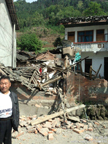 view larger image |
December 4, 2019: 2008 Wenchuan earthquake I am an international student from Sichuan, China. I have experienced the Wenchuan earthquake in 2008. The magnitude of the earthquake is 8.0. When the earthquake came, I was in an English class at my primary school. Everything was falling from the ceiling and walls. The tables and chairs were shaking. At first, I had no idea what happened until someone yelled “run!” Everyone escaped from the building and stayed in the playground. The day after the earthquake, my father drove me to Wenchuan where the center of earthquake was, to help the people there. They lost their homes and families. I took two photos on my way to Wenchuan. (Chloe Chen, SIO15 student, 2019) |
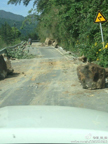 view larger image |
|||||||||
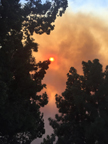 view larger image  view larger image view larger image
|
November 28, 2019: 2017 Canyon Fire 2 On October 9, 2017, a wildfire started near my home in Anaheim, CA because of an ember that was carried from a previous fire. This fire, called Canyon Fire 2, ended up burning 9,217 acres of land. I remember the news of the fire getting worse throughout the school day. The blue sky became dark from the smoke even though it was only 1 in the afternoon. Classmates were very worried, and some even crying from the anxiety and loss of their homes. Streets were filled with traffic from everyone (about 16,000 people) needing to evacuate, including myself. Days go by with the fire still burning on the hill next to my home. The fire was actually one street away from my home, but fortunately the fire was put out before it could reach it. Despite that, Canyon Fire 2 is a stressful experience I will never forget. It will always remind me of how dangerous and widespread wildfires can be. (Anonymous, SIO15 student, 2019) |
||||||||||
 view larger image  view larger image view larger image
|
November 26, 2019: 2019 Typhoon Hagibis Typhoon Hagibis proved to be extraordinarily devastating for northern Japan when it struck in October, unleashing more than three feet of rain in just 24 hours in some locations, causing widespread flash flooding as well as river flooding. The storm has killed at least 58. The high winds lashed Tokyo and Tokyo Bay, along with pounding surf and storm surge flooding as the storm, once a Category 5 behemoth, barreled across Honshu as the equivalent of a Category 2 and then a Category 1-equivalent storm. My friend who was from Japan told me that this could be the most terrible typhoon she has ever experienced. The train and Shinkansen were all stopped because the flood inundated the whole pathway. Everywhere is submerged. Food and necessities in the convenience stores were out of stock. People could only stay at home to wait for the end of Hagibis. (Yutong Guo, SIO15 student, 2019) |
 view larger image view larger image
|
|||||||||
 view larger image |
November 25, 2019: 2019 Hurricane Barry This past summer, I was in New Orleans when Barry came into the city. I am a National Executive Board Member of a public service organization of over 100,000 women called Delta Sigma Theta. This summer we held our National Convention in NOLA, and 18,000 of our members flew into New Orleans. The conference was supposed to be held from July 7-14, but was cut short and cancelled on July 11th due to threats of heavy wind and rain from Barry. Many people attempted to evacuate the city, but the next day, July 12 the Louis Armstrong airport was closed and we were directed by the mayor to stay in doors at our hotels. My hotel was right on the Mississippi River front, and we were able to see some of the waterspouts. Once we were cleared from Barry, we donated 17,000 plates of food to the homeless that had to be outside when the storm hit New Orleans. I was able to leave the city on monday the 15th. Here are a couple videos and pictures from my vlog about my experience. (Christine Emuka, SIO15 student, 2019) |
||||||||||
|
November 22, 2019: 2013 Texas Drought Living in San Antonio, Texas, I had first hand experiences with extreme drought. For days to weeks at a time, it would be 90+ degrees with no rainfall in sight. Oftentimes, we would have water system restrictions, unable to water our grass with an irrigation system, sprinkler or water hose. Personally, I quickly realized the value of drinking water while running track over the summer (I mean obviously because if not, I would’ve passed out). Dehydration and heat strokes were common on my team. In my community, the majority of the people saw an increase in electricity bills, and were impacted by drought based city ordinances. Geographically speaking, farmers in my area were devastatingly impacted. The ground was so hard, even if it rained, it wouldn’t absorb and the run-off would form additional planting issues. Rivers like the Guadalupe River, receded rapidly which impacted local biomes and increased the risk of wildfires. In Texas, drought is seen as a normal occurrence. Laws have been made to protect wildlife, and firefighters are aware of the potential wildfire hotspots. Here is a YouTube video showing how the drough affected the Guadalupe River. (Malia Henry, SIO15 student, 2019) |
|||||||||||
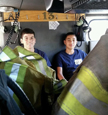 view larger image 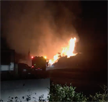 view video view video
|
November 8, 2019: Fire First Response and Rescue Since the age of 3, I've known I wanted to be a firefighter paramedic. My best friend Eric and I have shared that passion and kept up with it, joining a program together that provides us with advanced fire and rescue training and allows us to respond to major incidents with the fire department. In these pictures, Eric and I are on our first ride along together with Engine 13 where we got to see first hand what it was like to work the job of our dreams. In the next photo and video, Eric and I responded to our first major alarm brush fire together. Because Eric and I live in different cities, it is rare for us to get assigned to a fire together, but on this early summer morning, the call came in for a second alarm brush fire off the freeway with an immediate structure threat. Luckily, nobody was injured and no property was lost as a result of this incident. After a few hours of an aggressive attack and extensive overhaul operation, the fire was extinguished and I got to take a quick photo with my friend. (Robert Luna, SIO15 student, 2019) |
||||||||||
|
November 3, 2019: The Icelandic Greenland Shark Somniosus microcephalus, more commonly known as the Greenland shark is a species of shark that are known for their inhabitation of colder waters and high lifespans. The Greenland sharks are the only group of their species that can tolerate and stay within arctic condition waters all year. Their geological distribution is spread across the North Atlantic and Arctic oceans though they have also appeared in Portugal, France, and sparsely in the Arctic waters. The Greenland shark is also unique for its habitat within the water ranging from (0-1,200 m) below in the water and can survive in water temperature ranging from -1 to 12 Celsius. Additionally, they are one of the largest sharks ranging at eight to sixteen feet. However, on rare occasions they have been seen reaching over twenty feet. The Greenland shark is an apex predator as most sharks tend to be though this one is known for being scavengers. There has never been a documented attack of a human from this species. Some details about the shark include their slow metabolism and slow movement and ability to ambush prey much faster than itself. The Greenland sharks heart beats once every 12 seconds unlike the human heart which does every second in rest it is able to push a whole heart's worth of blood in one second through its whole body. The shark is the longest living vertebrate living up to five hundred years if given the chance. Some living specimens have been recorded as living up to four hundred years. This is known through radiocarbon dating and through slow growth rate measurements. Furthermore, due to being hunted by humans for their liver oil, this species has been negatively impacted by the human population throughout the 18th century and into the 21st century. Also, since they are apex predators, they have been known for having high level of pollutants in their bodies from to the toxins dumped by humans into the oceans. According to the World Conservation Union (IUCN), humans have made them a “near threatened” species. Global warming has also adversely affected their migration patterns and caused a loss of habitat. These once flourishing sharks may vanish in time due to being hunted by humans, global warming, and ocean pollution. With their extinction, all clues to low metabolism aging may disappear too. (Kayvon Dizehchi, SIO15 student, 2019) |
|||||||||||
 view larger image |
October 28, 2019: Santa Rosa and Chico Wildfires My first real experience with a wildfire was the Sonoma County wildfire around 2017-2018 (I was a senior in high school). I went to school in the Bay Area and the smoke made it so that it was difficult to see and we even had school cancelled for a bit. Everyone was giving out masks and many people stayed inside, and it was especially difficult for my friends who had issues with asthma. Last year, for the Camp Fire, I had lots of family around Chico and Santa Rosa, which are two places pretty close to Paradise. My aunt and uncle from Chico had to evacuate their house and were pretty worried that they were gonna lose their house, though it ended up being okay. It's crazy to think about how I was so far from Sonoma county in 2017-2018 and felt so burdened. I can't even imagine how bad it was for those so close to a wildfire as devastating as Camp Fire. (Grace Nako, SIO15 student, 2019) |
||||||||||
|
October 21, 2019: Colorado Flash Flood When I was about 8 years old I attended a YMCA summer camp in the mountains in Colorado. Earlier that year there had been a forest fire which had made many of the trees and plants very weak and dead. One night there was a large storm which included both rain and a bit of hail. This storm created a large flash flood and the cabin I was staying in broke down due to the water. Many of my fellow campers and I had to jump over the rapidly made rivers and streams the storm created in order to get to shelter. Because the trees were too weak to hold themselves to the ground mud, rocks and trees blocked the paths for emergency vehicles to come. The next day red cross came in to deliver food and supplies to all of us. That is the most I can remember from it all considering i was so young. (Jessica Denny, SIO15 student, 2019) |
|||||||||||
 view larger image |
October 21, 2019: 2017 Lilac Fire My family and I had to evacuate from the Lilac fires in Bonsall California during December 2017. Fallbrook, which is close to Bonsall, was where I went to high school at the time. I could see and smell the smoke during my lunch break. The ash was so thick in the air that our campus told us to all go inside. My campus was also a shelter site and many families and other schools started coming to our campus as soon as they had to evacuate. My aunt picked me up from school and we had to stay in Carlsbad during the time the fires were still burning. My aunt's neighborhood was all burnt down and many people in my community suffered for many months without a home. (Jessica Denny, SIO15 student, 2019) |
||||||||||
 view larger image  view larger image |
October 07, 2019: April 29, 2016 Oklahoma Tornado I am a transfer student from the University of Oklahoma. These photos were taken on 4/29/2016 by my friend. On this day, there was a tornado in our campus area. My friend and I decided to be a tornado chaser, and we drove our car along the highway. The sky turned to be green and grey. This is what we captured and have never seen before. So, he took these pictures for us to remember! (Chang Wang, SIO15 student, 2019)
|
||||||||||
 view larger image video clip |
September 3, 2019: 2019 Hurricane Dorian On September 3, 2019, my family and I were vacationing in Saint James, Jamaica to witness a thunderstorm soon realized to be hurricane Dorian's trek towards the Bahamas. I was lucky enough to capture a wicked occurrence off visible lightning and thunder from the main plaza of my hotel. Even with the hurricane on a path distant from Jamaica, the people of the country and my family still were able to feel the immense power that Dorian held. The hurricane had affected temperature and insect behavior as well couple days before this video was taken with a massive influx of mosquitoes and flies swarming guests near bodies of water like the pool and high levels of humidity causing the air to be very thick for several nights. (Aliyah Kazemaini, SIO15 student, 2019) |
||||||||||
 view larger image  source:windsorstar.com source:windsorstar.comview larger image |
September 30, 2019: 2009 Typhoon Morakot 2009’s Typhoon Morakot is known as “Eight-Eight Flood.” Between August 6th and 10th, 2009, Typhoon Morakot’s arrival caused unprecedented rainfall and flooding in Taiwan. The flooding caused by Typhoon Morakot is the most devastating flooding since 1959’s Typhoon Ellen. The southern part of Taiwan is the most severe part hit by Typhoon Morakot. Since my hometown is located in the east of Taiwan, it did not affect my family a lot. However, due to the security, all counties and cities’ government announced school and office are suspended on August 7th besides Kinmen and Lienchiang County. I was a pupil and having summer vacation during that time. I remember my parents watched the news to concern about other cities’ situation of a disaster frequently. According to the government’s record, there are 681 deaths, 33 injuries, and 18 missing from this Typhoon, even the village suffered mudslide bury. Only a few villagers could escape from that accident. Even though it’s been ten years since that disaster, it remains a big shadow in many Taiwaneses’ mind because it had destroyed a lot of families. There is still a lot of missing people that cannot be found nowadays. As I look back to this incident again, there is a sense of sadness that comes to my mind. (LinYi Chen, SIO15 student, 2019) |
||||||||||
|
September 29, 2019: The 2008 Sichuan Earthquake When I was in elementary school, I experienced one of the most catastrophic natural disasters in human history, the 2008 Wenchuan Earthquake. From what I can recall, it happened in an abnormally hot afternoon in my hometown Chongqing, a city not to far away from the epicenter, Wenchuan, Sichuan Province. I was in my starter chemistry class with my classmates. The fan hung on the ceiling started to shake quite vigorously; however, students did not even notice because we were exhausted and bored. Our chemistry teacher suddenly raised his monotonic voice and shouted “RUN!” Before we even realized an earthquake was happening, he sounded the evacuation alarm. Then, a chaotic crowd emerged. People were told to move to the playground waiting for further notice. Our parents came to pick us up. We didn’t even go home. Instead, my parents took me to a flat ground for camping because they were scared of the aftershocks. Here is a link to the earthquake at wikipedia. (Leon Tang, SIO15 student, 2019) |
|||||||||||
 view larger image  source:Yangshi News, Zhejiang 24 hours source:Yangshi News, Zhejiang 24 hoursview larger image |
September 29, 2019: August 2019 Typhoon Lekima Around August 8-10, 2019, typhoon Lekima was unexpectedly approaching to my hometown Linhai, China, a small city with a long history. People were not that prepared since they all assumed that Lekima would land in Wenzhou, a city farther south. Meanwhile, on August 6th, I went back to my hometown because of my uncle's wedding, which was right on August 10. No one knew that the typhoon was coming towards us, so everyone was preparing for the wedding. Three days later, the rain came first. The temperature dropped to 65° Fahrenheit and this almost never happened in Linhai's summer since it was always very hot in my memory. The night that Lekima came was scary. I was sleeping but big crash sounds woke me up. In my village, some old houses' roofs were made up by tiles and hay, which were not as stable as the modern material we use. Therefore, a lot of old houses' roofs were blown away and the debris struck on other houses' windows, walls... Also, along with the typhoon, urban guilt, water cut, and power off followed. Only several lucky areas had mobile service. Most people could not contact their families. The typhoon stayed for two days and went north. I will never forget the experience. BTW, my uncle did finish his wedding. (Hongyue Jin, SIO15 student, 2019) |
||||||||||
 view larger image  view larger image  view larger image photos: www.baidu.com |
September 28, 2019: The May 12, 2008 Great Sichuan Earthquake (Wenchuan Earthquake) I was still in primary school at my Grade 2 when the astonishing earthquake happened. It was an afternoon and everyone in my school was taking classes. Suddenly, the floor began to shake on an insanely great scale. Everyone was so scared that all of us rushed out of the classroom and to the playground immediately. Luckily, we were not in the earthquake’s epicenter which was Wenchuan and I was in Chengdu which is 50 miles from Wenchuan. So, all of us survived. After this earthquake, all of my family members move out to camp in an open field. There was quite a long time that the phone was not able to connect to the internet and the water and electricity services stopped. I still remembered that my father was working on the 26th floor when the earthquake happened, and he told me that he could really feel the sense of death at that time. This earthquake is the largest one since the founding of the People’s Republic of China, with over 69,000 people dying and 374,176 people getting injured. Now, every year, the Chinese government will hold a mourning ceremony on May 12th. (Xuhui Liu, SIO15 student, 2019) |
||||||||||
 view larger image |
December 7, 2018: 2018 Camp Fire My sister works in Sacramento, CA and was affected by the Butte County fires this November 2018. She is 82 miles south of Butte County and these are photos from the 13th floor and 17th floor of her office building. The "fog" is actually smoke from the fires and the near by park that is 2 blocks away is no longer visible because of the density of the smoke. NB: here is the wikipedia link to the wildfire, the deadliest and most destructive wildfire in California history to date. (Sarah Diaz, SIO15 student, 2018) |
 view larger image |
|||||||||
|
December 7, 2018: 1999 Taiwan Earthquake The 21 September 1999 Jiji earthquake in Taiwan, locally known as the "921 Earthquake", caused tremendous damage to the area. The earthquake was a magnitude 7.3 on the Richter scale, which negatively influenced the lives of many. Although I was not born during the time this happened,it affected my family in that it caused a lot of property damage. NB: here is the wikipedia link to the earthquake. This quake killed 2415 people and was the second-deadliest earthquake in the recorded history of Taiwan. (Hsueh-fu Chang, SIO15 student, 2018) |
|||||||||||
 view larger image  view larger image |
December 7, 2018: Extensive Rainfall/Flooding - Oceanside In North County San Diego, a city called Oceanside, CA received extensive rainfall during a rainstorm on 12/6/2018. Consequently, a lot of the roads (especially near the coast) flooded, some of the flooding was so high, that firetrucks had to block certain roads and people had to turn around and find another detour. Some areas of Oceanside have cement canals to prevent flooding (for instance around my grandmother's mobile home park) but these rains have caused them to overflow and caused damage to the mobile homes around it (like my grandmothers home). Many of which don't have flood insurance because "It rarely rains in San Diego!" On a lighter note, since Oceanside is just that, on the side of the ocean, there is prominent surfer community. Since they were unable to surf that day (because the dangers rain cause into the ocean as trash pollute it and create diseases) some of the surfers had to find entertainment elsewhere. For example, my friend Lukas Solberg, attached his surfboard to his dad's truck and the both went down Coast Highway, surfing along the flood. Although dangerous and, quite simply, stupid, this is an accurate representation of the surfing prominence in Oceanside. (Victoria Gabelman, SIO15 student, 2018) |
||||||||||
 view larger image |
December 4, 2018: 2005 Typhoon Matsa, China I live in Shanghai, China. As a city near the coastline and with a subtropical monsoon climate, Shanghai experiences 1 to 2 hurricanes on average each year, especially in July, August and September. From all hurricanes I experienced, I recalled that the Hurricane Matsa is the most severe one. I was at school as regular when the hurricane occurred. The hurricane left me an impression of how horrible a natural disaster could be on my way home. The wind was so strong that a lot of trees near my school were brought down. There was a huge flood affecting several districts. The traffic systems were vastly disabled and a lot of houses were inundated. This hurricane resulted in several deaths and brought Shanghai a great economic loss. NB: here is the wikipedia link to the typhoon. (Xin Ge, SIO15 student, 2018) |
||||||||||
 view larger image |
December 4, 2018: 2018 Woolsey Fire, Southern California I had to miss a couple days of school as I had to go back home to help my family evacuate. My whole street got completely destroyed, including my next door neighbor on one side. However, my house and my neighbors house on the other side are still standing because our neighbor decided not to evacuate and helped hose our house down whenever a flame would ignite. We got really lucky because of this or else our house would have burnt down too! I attached some pictures of my backyard after the fire. It got extremely close! (Shirin Ehyaei, SIO15 student, 2018)
| ||||||||||
|
December 1, 2018: 2009 Station Wildfire - Tujunga, California My home is located in the foothills of the Angeles National Forest so in August of 2009 when the Station Fire had spread throughout we were worried. Day by day the fire advanced downhill and reached the block above ours. As we would leave to go to school or work in the morning our cars would be covered in ash. Every day my friends were being evacuated and my sister’s middle school postponed class sessions because they were in direct path of the fire. I remember visiting my friend’s home at the time and seeing these large sprinklers that snaked across his roof. His father owned a sprinkler installment company and so he fitted them across his rooftop, luckily they never had to use them as the fire was contained in time. After the fire, the national parks service came and spread this ‘green spray’ across the mountainsides. This would later encourage the growth of grasses that held in the soil. In the end, 82 homes were destroyed and 2 firefighters sadly lost their lives. (Armen Karabekyan, SIO15 student, 2018) |
|||||||||||
|
November 29, 2018: Extreme Weather - Growing up in the South and being in Oklahoma Being born in Charleston, South Carolina, the first 13 years of my life were spent in the very humid and sticky climate of the east coast. In the 12 months of a calendar year, most of the seasons are experienced in extremity. In the summer, you shower everytime you go out to get the mail, drenched in bug spray for some relief from the constant barrage of mosquitoes. In the winter, the humidity turns on you and makes the air bone-chilling, with 40 degree lows while the rain adds on to the fun. Spring is the awkward cousin of summer and winter, with hot sticky days and cold nights. Fall is the only time where the climate could be considered nice, as the heat of summer is gone and the chill of winter has quite set in yet. Overall, most of my childhood was spent indoors. However, one thing I miss dearly are the thunder storms, the ones that reverberated your chest with a booming ferocity that pierced your ear drums, like someone was standing next to you with a piece of sheet metal and slammed it with a hammer. I always loved the suspense of seeing the sky get filled with a tree-root-like design and then waiting for the magnificant boom that would soon accompany it. Being in SC, I also had my fair share of hurricanes, including the notorious Katrina. While I was too young to actually remember it, my family had to retreat westerly to some friends in order to avoid possible destruction. Luckly, our house was barely scathed compared to the rest of the city but it did leave its toll. Comparatively to the hurricanes I lived through later, it was always a tense moment in the air as the weather increasingly worsened and stores became vacant, stocking up for the possible destruction of your home and need for later sustanance. That I don't miss. I also had the pleasure of visiting my father's birthplace of Oklahoma one summer and let me tell you the weather I saw there was biblical. Having watched in the distance across those flat plains, I'll never forget how the dark sky consumed the landscape, threatening to send it tentacles into the earth as it took on forms and shapes as if the clouds themselves were alive. I also won't forget the horror of being in a hotel while the wind tried its best to tear down your walls and rip off the door, shaking it, all the while sirens bellowed throughout the structure. After that experience, I finally knew why my father always checked the weather. I would too after having to grow up in that kind of weather. Overall, I'm glad to be in California now with its much drier, pleasant climate and lack of extreme weather, but sometimes I miss the hecticness of the South. But not the mosquitos. Never. (Jonah Tam, SIO15 student, 2018) |
|||||||||||
 view larger image |
November 26, 2018: Climate change awareness Found this satire cartoon on the timeline of people's level of awareness on global climate change and urgency to do something about it on imgur at i.imgur.com/pOIaviE.jpg. (Glenn Donaldson, SIO15 student, 2018) |
||||||||||
 view larger image  view larger image  view larger image |
November 18, 2018: 2018 Super Typhoon Mangkhut At 18:00 UTC on September 14, 2018, a Category 5 super typhoon “Mangkhut”, with 10-minute sustained winds of 125 mph and 1-minute sustained winds of 165 mph, made landfall in the Phillippine and subsequently impacted Hong Kong and southern China. My hometown, Canton, the capital of Guangdong province in southern China, was significantly affected. On the night of September 15, the government issued a red alert for Typhoon Mangkhut, which is the highest level of alert in Guangdong. All schools and public transportation markets were closed. The business services market of the whole city was shut down for the first time since 1978. The typhoon caused a huge flood to my city. The underground parking lot in my community was immersed in the flood. The flood level reached about 1 meter above the ground. The strong wind broke lots of trees and three people in my city were perished because of the falling trees. As of October 2018, Mangkhut was the second-strongest tropical cyclone worldwide in 2018. (Qixin Ding, SIO15 student, 2018)
| ||||||||||
 view larger image |
November 12, 2018: 2018 Woolsey Fire I went home this past weekend to Woodland Hills, California which is right by the Woolsey Fire. We were, thankfully, not evacuated but the areas around us (Malibu, Agora, and even Calabasas and Topanga which border us) were. My old high school became an evacuation shelter and the location that the town hall meeting took place. I still receive notifications from Pierce college where I took classes in high school and I have multiple emails and voicemails about classes being cancelled and uncancelled because it is also being used as an evacuation shelter. My mom could not get to her office in Agora for several days. And, unfortunately, friends have told me that part of Agora high school burned and classes will not be resuming until after Thanksgiving. The attached photo is from the 101 North not far from my house. (Tara Kade, SIO15 student, 2018) |
||||||||||
 view larger image  view larger image |
November 11, 2018: 2018 Woolsey Fire Recently the Woolsey fire of Malibu has almost gotten out of control. Since it’s a long weekend, yesterday I went to Calabasas, a city near Malibu to visit my boyfriend. My boyfriend is a PhD student at Pepperdine University. He used to have classes on Friday night from 6 pm-10 pm. However, as we approach Pacific Coast Hwy, the sky was full of smoke and there were continuously students walking away from the campus. He received several calls from Pepperdine University Emergency Control Center to evacuate from the campus immediately. Pacific Coast Hwy was closed and some students were still on campus. We stopped and helped four students who just walked from the campus to Pacific Coast Hwy. We drove them to their temporary shelter at Hilton Hotel, and the fire seemed so horrible that Pepperdine University announced this morning that the Malibu and Calabasas Campuses would be closed until Thanksgiving. Now I can smell the smoke in my boyfriend’s apartment in Calabasas. We have decided to pack everything necessary and go back to San Diego and he would stay at my place until further notice. Pray for Malibu! (Yan Sun, SIO15 student, 2018) |
||||||||||
 view larger image |
October 1, 2018: August 2018 Holy Fire I live in Murrieta, so the Holy Fire was just northwest of me, and I took the attached photos of it. It wasn't close enough to affect me or my family, but driving home on the I-15 south, I could see the flames on the side of the hill. (Rachael Pryce, SIO15 student, 2018) |
||||||||||
 view larger image |
September 29, 2018: 2012 Typhoon affecting China I'm from Beijing, the capital of China. Beijing has one of the finest municipal facilities in the world and everyone including my family believed we would never suffer from a flood. However, in 2012, a huge hurricane occurred and affected Beijing heavily. Many of our sewer connections couldn't take so much water and they exploded. I was in school that day and I saw a lot of people were evacuated to our playground. Just after one day of the flood, I heard there were over 50 people dead and the school was closed for one week. Here is a photo of one of the busiest subway stations in Beijing. (Yan Sun, SIO15 student, 2018) |
||||||||||
|
December 04, 2017: 2017 La Tuna Fire This past summer in LA County the La Tuna Canyon Fires occurred. I am from Glendale and the northern part of Glendale that borders La Crescenta. I live up in the hills and when the La Tuna fires broke out my entire backyard was covered in ash and the smell of the fire was very potent. The weather was extremely hot and a lot of people did not leave their homes. When the fires got worse they issued an evacuation warning for certain neighborhoods in Glendale, Burbank, and Sunland. The neighborhood next to me known as Whiting Woods had voluntary evacuation and many of the people left, and luckily my area didn’t have to evacuate. These fires lasted from September 1 to the 9th and five homes burned and 300 homes were evacuated. The fire essentially closed down the 210 freeway which is the main freeway for many of the people in my area. The fires caused traffic and as a result the 134 freeway was always jammed. I never thought that a fire of that magnitude could break out near me, most of the fires in LA were near Griffith Park, but it made me realize that my family should be more prepared as this was a very eye-opening experience. (Erika Aivazi, SIO15 student, 2017) |
|||||||||||
|
November 28, 2017: Night Earthquake in Marin County People would always tell me that earthquake-preparedness was essential, but I never imagined that a natural disaster could occur in my town. To me, it always seemed so beautiful and peaceful, a place where a natural disaster wouldn't want to touch. However, one night about two years ago, I was fast asleep when I heard something weird in my dream. Soon I realized it wasn't my dream and I woke up to my bed vibrating and a low rumbling sound. I was shocked to realize that an earthquake was happening and I was the only one awake. After about a minute, the rumbling stopped and my home was silent. I assumed that no one had woken up. I went back to bed in awe that I had experienced a real earthquake. The next morning I heard news that this earthquake had a huge impact in an area about an hour away from me. Lots of shattered lights and broken furniture in many homes and some homes even had fallen rooftops. It was scary because this area was relatively close to us which means that it could've easily been our homes. It struck me that natural disasters, specifically earthquakes, occur without warning, you will almost never know when one is coming. Earthquake preparedness, especially in California, is truly essential. Remember that doorways aren't actually the best protection compared to sturdy piece of furniture and not to exit until everything has stopped shaking completely! (Yewon Ahn, SIO15 student, 2017) |
|||||||||||
 view larger image |
October 20, 2017: 2012 Hurricane Sandy (New York) On October 30, 2012, Hurricane Sandy hit the state of New York and its neighboring states on the East Coast. At first, it seemed as though it wouldn’t be a major problem for my family and me, although we lived near the Hudson River. Therefore, we stayed in our home. However, suddenly, all the power went out and the water stopped running, so we were quickly forced to relocate to a hotel in Chinatown, as an area that was more inland, for three weeks, while the city was being repaired. The fact that we weren’t prepared for the incident was a major downfall on our part. We had no food or water stored, but thankfully, there was one restaurant open in Chinatown that we were able to go to every day. The picture shown is of the view from my building’s window (the tunnel, in which cars pass through, is completely flooded). Although there were no damages done to my apartment building itself, there were many damages done to the rest of the state. Areas were immensely flooded with water, so being able to travel from place to place proved to be a challenge - subway systems were down, and major highways and streets were blocked off. In addition, construction costed around $41.9 billion, a great economic downfall itself. (Sabrina Lau, SIO15 student, 2017) |
||||||||||
|
October 8, 2017: Indonesia Flood I would like to share the story about a natural disaster that I have experienced when I was 10 years old. I lived in Indonesia ever since I was born. Every year, it always rain so hard and cause flood during the raining season. However, 10 years ago, it was one of the worst flood that have ever happened in Jakarta. In some area, the height of the water reached to 5 meters. That year the rainfall has reached approximately 235 mm and some places reached to 340mm. I only remembered that we were trapped inside our house, thankfully we have enough food and water supplies. My aunt need to be picked up by the military though because her area has higher water than my area. It takes approximately 10 days for the water to be gone. The news stated that 80 people died and the losses was approximately $318 million. (Nadya Audrey, SIO15 student, 2017) |
|||||||||||
 view larger image  view larger image |
October 4, 2017: August 2017 Typhoon Hato I want to share a picture of a typhoon/hurricane that happened in my hometown, Guangdong, China. This is Severe Typhoon Hato that just happened in August, 2017. (Ziqi Wu, SIO15 student, 2017) |
||||||||||
|
October 2, 2017: The 2003 Paradise Fire and the 2007 Witch Creek Fire Fire season in north county San Diego is something I encourage people to take seriously. I grew up in a small town called Valley Center that has witnessed a series of wildfires over the last few decades. In 2003, while the notorious Cedar Fire was igniting other areas of San Diego, I awoke in the middle of the night to the smell of brush burning. My family and I were forced to pack our things in the faint hours of morning and pray that our house would be left standing when we were to return. The Paradise Fire caused hundreds of people in my town to evacuate during all hours of the day with ash raining from the sky while waiting in line for hours to get a pump at the gas station. Four years later, The Witch Creek Fire sent my community into another panic. The rural town and little time left people with no option but to leave corrals open for their horses to escape, bandanas being worn around the clock on everyone's faces, and traffic in all three exits out of the city. At night, the blaze on the side of the mountain near our evacuation facility was often compared to a string of Christmas lights. Although, in all of this devastation came a better sense of community between our local heroes - camped out by the hundreds in our meadows - as well as the citizens who were willing to reach out and help those who lost their homes. Today, you will find most Valley Center residents to be prepared because wildfires are nothing new to us. (Shelby Becker, SIO15 student, 2017) |
|||||||||||
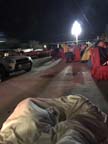 view larger image  view larger image |
October 2, 2017: 8th August 2017 Sichuan Earthquake I witnessed the earthquake as it happened at night in Sichuan on 8th August 2017. I had a visit with my family at Jiuzhai Valley during the summer. While we had dinner at a restaurant, I felt that the table was shaking. And suddenly someone yelled, "Get out of here, hurry up!" Without thinking, people were running out of the restaurant. As soon as we came out, I saw that all the plates on the table falling into pieces. I should say that everything breakable had been broken and scattered chaotically in the restaurant. Fortunately, all the people in our building were out of it even though some of them had some external injuries. Since we are a little far away from the Jiuzhai Vally that day, the shaking was not extremely fierce. We know that this was an unexpected event for both government and people. And then the government sent personnel to participate in the rescue work. We were moved into a safe place to sleep and given food to eat. We were placed near the emergency center and there were tons of people sleeping on the street. One of the picture of my back was taken by my sister at midnight after we were sure that everyone was safe. Due to the earthquake, the flight could not be on time. Therefore, we stayed there for another days. Luckily, it had no aftershock and the main roads were recovered by personnels quickly. This trip was really thrilling and I will not forget it in my life. (Jiaying Wan, SIO15 student, 2017) |
||||||||||
|
October 2, 2017: 2016 San Diego Earthquake I never experienced a natural disaster in my life so I never knew the potential danger that one could bring. The first ever natural disaster that I faced in my life was an earthquake that occurred in San Diego a year ago. I was heading towards the end of my freshman year and I was resting in the common area of my residential hall in Marshall College. It was pretty late at night so I was alone in the area, lying down on the couch. Then in one moment, two of the single room doors started to shake suddenly as if someone inside the room was trying to open the door vigorously. I was confused as everything else in the res hall was quiet and calm. Then I started to feel the couch vibrating and even feel my body vibrate with the couch. The vibration lasted about 8 seconds then I realized that what I just experienced was an earthquake. Soon later I started to hear other students in the res hall shouting out the windows saying "earthquake!". I searched up on Google if there was anything forecast on possible earthquake in San Diego area and I found out that it was a 5.2 magnitude earthquake that ranged in Southern California. Fortunately, nothing was damaged. My housemates came out to the common area to see everyone was okay. Rather than being scared, I was actually fascinated to experience my first natural disaster. Worries about possible disasters that I could face in the future came later. A year later, I experienced a minor earthquake in South Korea where I'm from, and from there, I began to realize that I should be aware of the evacuation procedure that should be taken during a natural disaster. NB: The 2016 magnitude 5.2 earthquake occurred at 1:04 am local times on June 10 in the Borrego Springs area, on the San Jacinto Fault (Jimin Koo, SIO15 student, 2017) |
|||||||||||
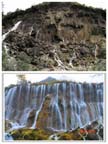 view larger image |
October 1, 2017: 2017 Sichuan Earthquake This summer, I had an encounter with a natural disaster. I experienced the first real earthquake in my life. I went to China’s Sichuan province with my parents since there is a beautiful attraction—“Jiuzhaigou”. It is one of the most famous places in China and often appears in TV series. When we got there, we stayed for two days. But on the third day at nine o'clock, the earthquake happened. The sudden shock made us leave our hotel and next to the hotel, landslips happened on a little mountain. At that time, our mobile phones could not search for a signal and all the people who live in the hotel stood in the front of the hotel. The scene was very unorderly and we could hardly keep calm. Fortunately, we finally got help from firefighters and leave to a safe place. This picture is a before/after photo of “Jiuzhaigou” and many landscape in that place received huge damage by this earthquake. NB: The magnitude 5.5 earthquake occurred on August 8, 2017. (Jiachen Liao, SIO15 student, 2017) |
||||||||||
|
November 26, 2016: 2002 Typhoon Rusa In August 2002, Typhoon Rusa struck South Korea. I was really young back then, but I still vaguely remember what happened because this typhoon was so terrifying. It was the very first natural disaster that I experienced. My parents also remember how intense this typhoon was. Our family lived in Seoul back then, so the typhoon did not hit our area too much. As far as I remember, classes were cancelled and I stayed home for a few days. When I looked out the window, I saw trees falling. The windows were also shaking and I was really scared that our apartment was going to collapse. We also lost power and water from time to time. Thinking about how windy it was in Seoul, I cannot believe how hard it was for people in Goheung and Gangneung. There, properties were damaged and people were found dead. Animals also drowned and died. Even after the typhoon dissipated, Korea struggled with polluted rivers from the chemicals and heavy metals from the damaged buildings. More importantly, several people lost their family members and some lost their homes. I did not know how important it is to learn about what typhoon can do to us. One thing I still do not understand is why they named the typhoon Rusa, which means a deer. After all, I am glad I took this course to learn more about natural disasters. (Suhan Lee, SIO15 student, 2016) |
|||||||||||
 view larger image  view larger image |
October 21, 2016: August 2016 Tropical Storm Nida I unfortunately have a story to tell. I experienced a strong typhoon called Severe Tropical Storm Nida not so long ago during the annual typhoon season on August 2016. It made landfall in southern China on August 2, and impacted five provinces of southern China, and my hometown Guangdong was on the list, which issued the highest local Tropical Storm alert. When the storm impacted I was at sleep, but when I woke up and walked out my door, I saw my neighborhood was noticeably different. I saw trees were down and crushing cars, roofs were blown off and blocking the traffic, all flights were canceled, everything was chaotic. According to wikipedia, the total economic losses reached $76.9 million in China and total $89 million within Asia. (Ziwen Guo, SIO15 student, 2016) |
||||||||||
 view larger image  view larger image photos: wikipedia |
October 17, 2016: April 2010 Storm and Landslide in Brazil My mom is Brazilian and my dad is American. I lived the first few years of my life in Pennsylvania and when I was 10 I moved to Rio de Janeiro. Prior to this, the only natural disasters I could think of were blizzards that I'd experienced in the US, or tornadoes, which fascinated me. In April 2010, for the first time in my life, I was affected by a natural disaster. Rio is known for frequent summer storms but nothing ever too serious. On April 5th, I woke up, as usual, at 6:30 AM, to get ready for school. It was pouring outside and I could hear thunder, lots of it. I headed downstairs but breakfast wasn't served. My mom was watching the news, and I heard phrases like "torrential rain", "largest rainfall in Rio since the 60s", "the city is paralized." I asked why breakfast wasn't served and she said that the maids couldn't even leave their homes to get to work that day. I wasn't to leave go to school on that day because it was too dangerous to go out and traffic was completely stopped. And then, I saw the unthinkable on TV: aerial footage of my street, "Rua ....", completely flooded, essentially turned into a river of water and mud. Shortly after that, lightning struck at the same time as what was the loudest thunder I ever heard, and the aerial camera turned to a tree, destroyed by the lightning, only down the street from me. That's when I realized that I wouldn't be leaving my house for the next few days. The storm lasted three days, by which the end, 261 people in Rio and surrounding cities, lost their lives, and over 5,000 were displaced, mainly due to landslides in various points of the metropolitan area. Some also perished to lightning strikes, floods and electrocutions. Most of these landslides happened in impoverished areas with little to no infrastructure. The worst landslide was on "Morro do Bumba", a slum built upon a landfill which completely collapsed, being responsible for almost half of the deaths in this tragedy. But what shocked me the most was seeing schoolmates of mine lose their homes in wealthy areas of the city, some only a few blocks away from where I lived. Not to mention the security guard who worked at my school who disappeared in one of the landslides. It made me realize how close I can be to a natural disaster and how it can impact my life and those around me. Rio was in no way prepared for a storm of such drastic proportions and it still isn't. Infrastructure hasn't improved at all in the city since the April 2010 landslides and if an actual hurricane were to hit the city, many preventable losses are to occur again. (Theo dé Sa-Káye, SIO15 student, 2016) |
||||||||||
|
December 8, 2015: 2003 Typhoon Maemi in Korea It was a long time ago when I experienced this natural disaster called typhoon Maemi. When I was an eight-year old boy, I was so much scared of strong winds and heavy precipitation. I burst into floods of tears when the windows were shaking at home. At that time, I was just scared of strong winds, but as I grow up, I become to realize how terrifying the typhoon Maemi was. In Korea, "Maemi" is Cicada so that I could not expect that how disastrous "Maemi" was behind this small insect name. According to the Internet, the Typhoon Maemi inflicted huge losses of both life (132 fatalities) and property (over $4billion). I heard that all the underground places including subways, shopping centers, roads, even houses were flooded. Typhoon Maemi blocked all the transportation and other convenient facilities. I was so fortunate that no one in my family got harmed from the typhoon. I now realize that one natural disaster can bring hundreds of fatalities and billions dollars of loss, and how it is important to study natural disasters. (Taeho Jeong, SIO15 student, 2015) |
|||||||||||
|
December 8, 2015: South Korea Air Pollution My story isn't specifically about a natural disaster but a huge phenomenon caused by severe pollution back where I'm from in South Korea. Over the past three years, the amount of fine dust in the air has increased dramatically, to the point that it affected human activities. Hearing about fine dust every night from the news wasn't a surprise and when opening the window or going outside for a walk, I had to think twice. The problem with this fine dust is that the pollutants in the air have tiny high-toxic particles that permeate even into the lungs and cause respiratory diseases. It is bad because it's the dust and pollutant particles that are basically causing pollution, and they are human caused, e.g. from cars, factories, etc. Yellow sand phenomenon (Asian dust phenomenon) was already a common thing that happened to disturb the air condition - it's when sand from deserts of Mongolia and China flew making it opaque and bad, causing certain effects on crops, growth of plants, and even traffic. This additional problem to Korea is still to be resolved. It has had a nationwide effect and will come back around spring or summer. (Chae Yun Cho, SIO15 student, 2015) |
|||||||||||
|
December 7, 2015: Massive Summer 2015 Thunderstorm in San Jose The summer of 2015 was marked as a relatively cool one, compared to other years. There were even some days of moderate rainfall, which was bizarre. One day however, I was not only witness to a heavy night of rain, but also to one of the most ferocious thunderstorms I have ever seen. The only other time I witnessed a strong thunderstorm was when I was in an airplane flying from San Francisco to New York City, where I witnessed lightning up in the air around the Washington DC area which looked magnificently terrifying. This time, I witnessed this level of ferocious storm from the ground. I kept my window open to truly experience the storm, and the thunder was absolutely deafening, so loud that it even set off car alarms. It literally felt as if the world was ending, that there were massive explosions going on in the air. The lightning bolts lit up the sky with the brightness of the sun, and I could actually see the individual bolts making their way through the thick grey clouds. I was astonished at the storm, however felt safe in my home, until I noticed emergency helicopters flying around the mini-mountains near by. The lightning strikes had created a mini fire on the tops of these mini-mountains, however the fire was effectively contained from spreading. I definitely felt less safe after witnessing this, however the storm eventually moved away, with heavy rain quickly following. (Sumeet Vij, SIO15 student, 2015) |
|||||||||||
|
December 7, 2015: Summer 2013 Power Blackout in San Jose The summer of 2013 in San Jose was an incredibly hot one. San Jose is known for having chilly winters and hotter summers compared to other cities in the Bay Area such as San Francisco or Palo Alto, mostly because it is more south and inland. However, this summer featured extraordinary, relentless heat, even for San Jose. In the months of June and July, almost every day reached 90 degrees, with many days topping 100. There was one particular stretch of days where it never went below 100 during the daytime and 85 at nighttime. Luckily, technology has given us fans and air conditioning, so everything was fine as long as we remained inside. However, one night we lost our power as well. It was reported that PG&E had complications with generators in the area, which were being massively overworked due to the dense concentration of houses in my area using AC and fans. Fortunately, this black-out occurred at night, however the experience was still terrible. The blackout lasted over 6 hours, and it was impossible to sleep because of how hot and stuffy the house became. It was also pitch black outside due to the lack of power, so it was dangerous to go out and travel to another area that still had its power. Fortunately, my family managed to overcome the obstacle. Yet I could only imagine how this event could’ve been very dangerous to older people living in the neighborhood, who could’ve suffered heat strokes. It really put things into perspective of how reliant we are on electricity, and that if it is suddenly taken away from us, how hard life suddenly becomes, especially during a heat wave. (Sumeet Vij, SIO15 student, 2015) |
|||||||||||
|
December 7, 2015: The 2009 San Jose Earthquake Coming from the Bay Area, I have experienced a decent amount of earthquakes in the past, but mostly ones that were either too small to notice or so small that they were just a slight, short tremor. However, one summer evening, I experienced a new level of Earthquake – one with a power that truly could be felt. As the Earthquake first began, I was confused. At first, I thought the rumbling was caused by my sister or someone else jumping on a bed upstairs, or that something broke or fell down. But then, the rumbling began to pick up, becoming more powerful by the second. My dad shouted "EARTHQUAKE, GO UNDER THE STAIRCASE" and I was stunned; this was the first time I’ve ever experienced a true natural disaster where I had to take immediate cover. We stood under the staircase for a good 20-30 seconds and waited out the shaking, and I was astonished at the power. I could feel the entire ground moving, and heard items falling off from shelves upstairs and downstairs. The thought that constantly kept me in fear was "what if the house collapses, or fires break out?" After the earthquake finished, I went outside to see all the neighbors crowded around the street. People were saying it was a 7.5, 8.5 magnitude Earthquake, and others were saying that there might be riots and lootings in downtown as a result. However, after turning on the news, we found out that it wasn’t nearly as bad as we thought – about a 5.8 magnitude Earthquake that originated south of San Jose, nearer to Monterey. There was no major damage in the city, and only a few reported minor injuries. This event really put things into perspective for me; if a mere 5.8 Earthquake asserted this much power, I couldn’t imagine how devastating a 6.5, 7.5 or 8.5 Earthquake could be to the city and its surroundings. (Sumeet Vij, SIO15 student, 2015) |
|||||||||||
|
December 7, 2015: Wind Power as Renewable Energy - Pros and Cons Just fifteen minutes away from my hometown of Mojave, California, I am able to see firsthand the effects of the Tehachapi Wind Resource Area (TWRA) and the major impacts of this wind energy. While I understand that certain regions may not get as much wind as the TWRA, which is considered the largest wind resource area in California, the advantages of even a few wind generators which turn the wind’s kinetic energy into mechanical energy, scattered throughout the various "windy" areas in the US would be a huge relief on fossil fuels that we use to provide our current forms of energy. It would also be beneficial for a healthier environment where we can learn be more self-sufficient and self-reliant. As with any construction project or large structure, wind energy can impact plants and animals, depending on the sensitivity of the area. Some primary wildlife concerns associated with wind energy are direct fatalities from collisions or electrocutions (reports of birds and bats having been killed) and the loss of wildlife habitat and natural vegetation. There is also some concern over the noise produced by the rotor blades. The sounds they produce are typically foreign to the rural settings where wind turbines are most often used. This can cause discomfort to both wildlife and to people populating the nearby area. The aesthetic impacts that wind generators may have on the landscape is also noteworthy. Some people may see graceful symbols of economic development and environmental progress or sleek icons of modern technology while others might see industrial encroachment in natural and rural landscapes. With time, more analytical and technological advancements and more awareness and funding, these issues can be alleviated in innovative ways that will still allow us to harvest and benefit from nature’s wind energy. (Jarod Corey, SIO15 student, 2015) |
|||||||||||
|
December 7, 2015: Fracking vs California's Drought As we know, our beautiful country is in a national emergency – the effects of a long lasting drought. Not only is this affecting our everyday lives as Americans, it is specifically affecting our Golden State. California provides a sizable majority of American fruits, vegetables and nuts being the number one food and agricultural producer in the United States for more than 50 consecutive years. While agricultural and household usage consumes a large portion of California’s precious liquid resource, I would like to draw your attention to another aquatic guzzler less familiar to the general public: fracking. If the mere muttering of the word fracking isn’t already enough to catch you off guard and send a negative chill up your spine, the 70 million gallons of water used for fracking in 2014, in the state of California alone, is sure to grab your attention. "Fracking" or Hydraulic fracturing involves blasting huge amounts of water, sand and chemicals deep into underground rock formations to access valuable oil and natural gas. While this can be considered a form of alternative energy, it also has harmful environmental implications, influencing the local air pollution, causing earthquakes that may shift and change the patterns in our tectonic plates and using an insurmountable amount of our valuable clean water supply that should be rationed and used more responsibly. Does it not seem ridiculous to use one priceless resource in order to obtain another one, both holding value? This is why we need to bring attention to this otherwise under the radar yet popular practice. We need use our Earth’s resources more dutifully and sustainably so that we can enjoy them for years to come. (Jarod Corey, SIO15 student, 2015) |
|||||||||||
 view larger image |
December 6, 2015: 2008 Oregon Snow Storm Growing up in Portland, Oregon, I rarely experienced a white blanket of snow outside of my house. With the average yearly snowfall of about 3 inches per year, I would sometimes see white roof tops and lawns. But during the winter of 2008, Portland experienced an Arctic Blast. This snowstorm was the most significant snow event in 40 years, dropping 19 inches of snow (over 1.5 feet of snow). This was the snowiest December since 1940. The whole 2008-2009 winter snowed a total of 23.9 inches. According to the National Weather Service, it was the worst winter storm to hit Portland since 1968. During the two week storm (December 14-28), workers around Portland did everything possible to keep public transportation operating and roads clear, although they still closed for small periods of time. Costs to provide 24-hour road services and to lay out gravel and sand over the course of two weeks was estimated at $2.17 million. In addition, the city estimated a loss of $337,000 in parking meter revenue. This Arctic Blast also caused lots of road damage, such as potholes. During this time, I was in 6th grade. I remember having a long period of time away from school and building igloos and snowmen. I also remember how hard it was to go anywhere outside of the house, including the grocery store. There was a small period of time where my family was eating anything available in the cupboards and refrigerator because it was too difficult to go to the store. The Arctic Blast was fun at that age, but I am glad I live in sunny San Diego now! (Louisa Alstot, SIO15 student, 2015) |
||||||||||
 view larger image |
December 5, 2015: 2011 Flash Flood in Seoul, South Korea A flash flood in Seoul, South Korea led to major landslides near cities during July of 2011. At this time, I was in freshman year and lived 20 minutes away from the affected areas. This event prompted authorities to draft in the military to help with rescue and execute clean up operations. This flood left a mark in Korea's modern history for the flood and landslides put the death toll at 41 with 12 people missing. During this time, my friend's family had to abandon their vehicle as it was submerged in floodwater after a heavy rainfall. Due to the high elevation of water, grounds with steep slope angles were saturated with high water content and lost its resistance force, and these actions eventually triggered the movement of materials. In the end, the flood not only gave damages that costed more than hundreds of millions of dollars to repair, but also a huge emotional distress to the people. (Judy Chun, SIO15 student, 2015) |
||||||||||
 view larger image |
December 4, 2015: Kansas Tornado When I was six or seven, I lived in Lawrence, Kansas. Tornadoes are very active in Kansas. The movie Wizard of Oz originated in Kansas as it lies in Tornado Alleys. Most houses in Lawrence had basements. But at that time, my parents were graduate students at Kansas University and we lived in student apartments. The closest basement to our house were the laundry room near by. When one late afternoon there came an alert for a huge tornado coming across Kansas and likely to hit Lawrence, my family decided to go to the laundry room. However, it was crowded with people so we had no choice but to find another place underground. My dad suggested we could go to a science lab in a basement on campus. So we jumped in his car and drove as quickly as possible to the lab. On our way there, we heard sirens and at that moment, everything seemed chaotic. And it was also very confusing. Some people were still on the street. I even saw a family picnicking on the side of the road, which was very weird because normally nobody picnics there. They looked as if they came to watch a parade. Minutes later, before we reached the university, my dad suddenly drove off the road, onto the grass on the side, and told us to stay in the car. Then, the tornado came. Not as large and dramatic as I would have imagined, but it was dark and beautiful. It spinned across the street and ended up swirling into a lake beside the university. And then I lost sight of it. It was very, very quick. The blink of an eye, it was gone. I would have sweared it disappeared in the lake, like when water swirls down a sink. But at my angle at the time, I can only say it went either in the lake or very close to it and disappeared. Afterwards, I asked my dad why it didn’t look that scary, and he tried to explain to me that the large tornado probably split into small ones before it came here. My dad used to be a math professor, so I wasn’t sure if he was just blabbing to a child or that was really true. For the following two years, we came across many tornado alerts, mostly at nights. At that time, we had a basement of our own. And we had beds and food stored in case of emergencies. No harm was ever done to our house or of anybody I have known. Compared to earthquakes and hurricanes, I would say tornadoes do far less harm and doesn’t cause as much fatalities. It was a beautiful experience; me and my family used to refer it as our “Kansas Adventure”. (Hanhui Lou, SIO15 student, 2015) |
||||||||||
|
|
December 4, 2015: Thanksgiving Trip to Joshua Tree National Monument On the weekend of Thanksgiving break, I was planning to visit the Joshua Tree National Park. Known to be one of the most well known U.S. national monuments, I was very excited to see the iconic symbols of the California Desert. However, there were news on that Sunday morning that there was a fire that was burning in the park. It was reported that the fire was allegedly caused by human activity. It made me sad to hear of this, because although the fire may or may not have been and accident, a burning Joshua tree had to be cut down. 85% of wildfires are caused by humans, and it could have spread throughout the whole park if professional crews did not reach the fire sooner. Although fires are more likely to spread due to the weather, this incident was solely caused by human activity, which ultimately led to the destruction of one of the historic trees in the park. Although the tree could have been surrounded by chaparrals, which are one of the most flammable plant groups, it is still heartbreaking to know how careless people can be with fires. (Jennifer Kim, SIO15 student, 2015) |
||||||||||
|
|
December 4, 2015: 26 July 2005 Mumbai Floods, India It was a regular school day during the rainy monsoon in Mumbai. It was around noon when people started to get alarmed about heavy nonstop rain for the last 30 minutes. Soon news broke out that the streets were beginning to get water logged. The school declared a half day due to a flood threat and our parents were contacted to come pick us up. By the time my mother and my sister came to pick me up, the streets were very water logged. When we were driving back home, the water started seeping into the car and the water had filled up all the way up to my chest. We had to eventually swim back home and we left our car abandoned in the street. For the next few days we had no electricity and very patchy phone signal as the city was waterlogged for close to three days. (Anonymous, SIO15 student, 2015) |
||||||||||
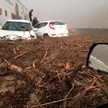 view larger image  view larger image |
December 3, 2015: October 2015 Mudslides in SoCal High Desert In my hometown of Mojave, CA, we have very unique weather with extreme hot dry temperatures, harsh cold temperatures at nights, heavy rains when rainfall occurs and even the occasional snow fall. Being only about twenty minutes from the Tehachapi Mountains, it affects our town climate quite often. In October of 2015, I made the trek from San Diego back northwards to my hometown to visit my parents for the weekend. On a rainy Saturday, we decided to grab a late lunch in the city of Tehachapi where we have to travel through the mountains to reach the town at a higher elevation. On our way, we noticed an influx of traffic that was a bit unusual but didn't think too much of it. As we traveled further, we noticed that the road was closed and they were turning people away giving them an alternative detour route to certain destinations. Being curious, we asked one of the Cal Trans workers what was going on and he said there was massive flooding causing a powerful mud slide that was spilling over passed the barriers onto the road that we could begin to see. We turned around and decided to grab some food locally not knowing just how serious the situation was. When the rain stopped and the flow of debris had subsided, the mud spanned a few miles along the roadway, with over fifty vehicles in array, submerged and engulfed by mud. Some of the people in those vehicles were stranded for over twenty hours and many others stranded in motels in our town. The clean-up process took over a week to finalize and caused a lot of inconvenience for travelers, many of which could not take alternative routes and had to wait until the clean-up was complete. Furthermore, the complications and damages to the people's vehicles that were stranded proved even more problematic with insurance claims and compensation. Thankfully we were in the right place at the right time, but one of our family friends was not so fortunate. The attached picture was her stranded in her truck amongst the mud flow for a total of four to five hours. In the other attached picture, the day after we were turned away, my parents and I went back to see the outcome after hearing the severity of the event. It just goes to prove that Mother Nature could hit at any moment (Jarod Corey, SIO15 student, 2015) |
||||||||||
|
|
December 3, 2015: Typhoon Soudelor hits Taiwan On August 7, 2015, Typhoon Soudelor hit Taiwan. It was equivalent to a category three hurricane and had the wind speed of 125 mph. I happened to be in Taipei when the typhoon hit. This was the first time in four years that I visited the country, and since I was born there, I was used to the typhoons. However, this specific typhoon was the strongest I have ever experienced. My dad and I ran to the market a few days before the typhoon hit and we stocked up our water and food supply. All of the convenient stores ran out of drinking water after the typhoon hit the cities. The typhoon impacted the country immensely and damaged the water and electricity services. The water was contaminated and I remember seeing reporters report the complaints of citizens for not having any clean water to drink. I was instructed by my dad to not cleanse my mouth with the water, but with the drinking water we bought. My dad also collected bottles of water from each day to compare the quality levels. The change was drastic. From yellow, mud colored water that was not transparent at all to the finally safe and clean water, one could witness the powerful typhoon's effects. All of the basement parking spots were taken up so my uncle and aunt were forced to park outside and paid the price. The trees fell and caused damaged to the roads and cars. The tree shattered their glass and they had to repair the windows. We were stuck inside for a few days as we waited for the typhoon to pass. Floods were occurring and we had buckets of water catching the rain that leaked in. We lived on the 14th floor and my family had to take turns cleaning up the mess. It was like we had our own flood inside the apartment. The winds were also impressive. It howled day and night and was a great natural disaster. (April Tsuei, SIO15 student, 2015) |
||||||||||
|
|
December 3, 2015: 1998 Hurricane Mitch - personal story The year was 1998; I was close to three years of age. I was living in Guatemala, a small country in Central America. I don’t remember much detail of the event but my mother has filled in the gaps with video footage and pictures. Living in Central America at the time was already hard enough with the economic difficulties, so much that my father migrated to the U.S. in pursuit of a better and more economically stable life for my family. This left my mother, a schoolteacher, to provide for us. Everything got worse when the storms came. The biggest threat to my family was no longer economic stability; it was now Hurricane Mitch. This category 5 status hurricane is currently described as one of the most destructive hurricanes of the Atlantic Hurricane season of 1998. According to intellicast.com, this season is also known as the “second deadliest season on record,” costing the most storm-related fatalities in the last 200 years. I remember my mom making us pack everything we could because we were evacuated in an attempt to avoid the storm. I remember trying to take my toys but not being allowed to because it wasn’t worth saving. As we were leaving I noticed the streets were flooded. We were heading to my father’s family home in Izabal. We were riding in a bus-like vehicle with many people who had lost loved ones in the hurricane, many of them searching for and hoping their loved ones survived. As we were on route to my father’s home, there was a need to cross an old wooden bridge; unsure whether the bridge was still stable the driver risked it all in attempt to escape the storm. All the passengers were relieved as we got through. When we got to my father’s home all we could do was wait to be notified that it was safe to go home. Upon our return home it was shocking to see the destruction this storm had done to our house. The storm flooded the house, and destroyed our furniture. I could see all of our possessions had been tossed and turned and became unusable. All my toys were wet and out in the streets. My mother tells us stories of friends that never truly recovered from this storm. One of my mother’s friends lost her two of her children in the middle of the hurricane and witnessed her third child get bitten by a snake in the flooding water. She eventually found one of the missing children reportedly stuck in a tree after the storm and continued looking for her other daughter. She went crazy and was convinced that every single little girl she would see on the street was her daughter. This event had a great impact on the lives of thousands of families. So many innocent people’s lives were destroyed. As for mine, we tried to rebuild our home after the storm and attempted to move on. But in the end we were just thankful that we didn’t suffer as tragically as many of those around us did. (Jose Catalan, SIO15 student, 2015) |
||||||||||
|
|
December 3, 2015: The 2008 Wenchuan, China Earthquake I experienced Wenchuan Earthquake in China, May 12, 2008. When the earthquake happened, I was napping during the school lunch break. I suddenly felt the shaking of my bed, and it woke me up. I thought it was just my roommate tricking me, but it was not. When we were rushing down the stairs, I could see shoes in the stairway. I assumed that people were in such a hurry, that they even did not put their shoes on properly. When we get to the classroom the day later, I found that nearly all books were on the floor, and some of the window cracked because of the earthquake. Later on, when the news started to show on TV, I found that many people died. The earthquake happened in the mountainous area, and many people resided in the valley. As a result, when the earthquake triggered the massive landslide, many people were buried alive. Considering the density of population in China, this earthquake have taken so many lives. I also have experienced some after shocks as well, but they were not as apparent as the major earthquake. However, because we were 200 miles from the epicenter, there was no fatalities from my school. Nevertheless, we did take some students from the damaged area since their schools were destroyed, so they can continue their education. (Ruoqian Shi, SIO15 student, 2015) |
||||||||||
 view larger image  view larger image |
December 1, 2015: The 2008 Wenchuan, China Earthquake These photos were taken in my hometown Zhanjiang, Guangdong, a place next to the ocean in China. The place in the photos are just near my home. Most of the trees in the city were blown down and just hit the car which parked nearby the street on those few days. And there are some places that even don't have electricity and water to use. The "Rainbow" was the most destructive typhoon happened in Guangdong ever because it made us lose so much money, and needed so many people to recover the city. (Ying Lao, SIO15 student, 2015; photos taken by her mom) NB: Typhoon Mujigae that struck Guangdong province on Oct 4, 2015 was reported the "most powerful storm in history", spawning tornadoes and forcing 200,000 people to evacuate. Check out rt.com |
 view larger image |
|||||||||
|
|
November 27, 2015: The 2008 Senson Fire The Senson Fire, also known as the Porter Ranch Fire, ignited in October of 2008. At that time I was in 9th grade and lived 10- 15 minutes away from Porter Ranch. The Porter Ranch fire required inhabitants of nearby homes to evacuate and wait at local schools and churches. I remembered this fire because I was close to two families that had to evacuate their homes at that time. Fear was placed in most individuals, because the Santa Ana winds helped fuel the fire, thus burning down even more homes. Our town was doused with the scent of fire and destruction and covered with a gray haze. As I recall this disaster, I still remember the heartbreak that I felt seeing ash fall upon my driveway and knowing that they were the remnants of peoples homes and livelihoods. (Lavinia Osilesi, SIO15 student, 2015) |
||||||||||
 view larger image |
November 4, 2015: Whitecaps from first local winter storm This week's storm brought the first significant whitecaps to local waters. Whitecaps indicate that waves break in the open ocean. This happens when winds continue to blow after the sea has fully developed (gained maximum wave height theoretically possible for a wind of a specific strength, duration and fetch). The formation of whitecaps depends on the local wind conditions. Gentle breezes with wind speeds of 12-20 km/h (7.5-12 mph) may generate scattered whitecaps while a fresh breeze at 29-39 km/h (18-24 mph) produces many white caps. The current wind speed, as measured at the Scripps Pier, is 9.2 m/s (or 33 km/h). The wind-generated waves have enough energy to take the beach sand away, as indicated by the brownish water in the foreground. (Gabi Laske, SIO15 instructor, 2015) |
||||||||||
 view larger image |
November 3, 2015: First local winter storm Hi, i wanted to [show] this for the flash flood that happened today. In this picture there is a flash flood and it shows that the runoff is higher in urban areas with urban rainfall, that the penetration into the ground is low, as well as outside the picture there was lightning as well. (David Choi, SIO15 student, 2015) |
||||||||||
 view larger image |
November 3, 2015: First local winter storm I took a picture of the flood today. The flash flood shows urban rainfall and the runoff in cities is greater than that of rural areas. In SD, today, there were lightnings and thunders that were visibly seen. Because of the sudden rain, there was a big amount of flood that flooded the grounds of UCSD. In a short amount of time, heavy rain occurred, which resulted in the flash flood. (Shannel Yoo, SIO15 student, 2015) |
||||||||||
 view larger image |
October 29, 2015: Philippine Typhoon 2014 Aftermath of Typhoon Rammasun (Glenda) in Alabang, Philippines (July 2014). (Jamie Harvey, SIO15 student, 2015) |
||||||||||
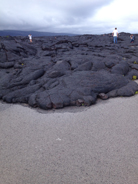 view larger image |
October 15, 2015: Hawaii Lava Flow A couple years ago I went to visit the Big Island of Hawaii and saw some old lava flows. I was watching the SIO15 Coursera video and thought it was relevant. I believe this is Pahoehoe lava flow because it looks rather "ropey". I forget which eruption this was from, but it flowed over into the street causing permanent road closures. (Jamie Kuwae, SIO15 student, 2015) |
||||||||||
 view larger image  view larger image  view larger image |
October 12, 2015: Taal Volcano, Philippines My family and I traveled to the Philippines in Dec 2011-Jan 2012. One of the places we stopped by was in the Batangas region of the Philippines, about 2 hours south of the nation's capital: Manila. This was my second time seeing the volcano, but this time I appreciated it much more. I was amazed by how beautiful the scenery was; it was very picturesque. The water in the lake was a rich dark blue and the volcano was rich in greens and browns. Being that it is in a lake, we had to travel down towards the lake through a long, winding road to then reach a short boat ride to go onto the island. I was quite surprised to see that island was a small community: there was a school, visitor center, and a few stores. This reminded me of lecture today with the proximity of the population of people living near the volcano. We didn't have time to do the hike towards the crater of the volcano, but we did see the volcano from a bird's eye view as we approached the crater. I could not believe how beautiful and how scary it was at the same time. It reminded me that while this was a very beautiful place, danger could be lurking around the corner as well.(Marlon Timog, SIO15 student, 2015) |
||||||||||
 view larger image |
|
||||||||||
|
October 11, 2015: 2011 Tohoku, Japan Earthquake, Tsunami and Fukushi Nuclear Power Plant During last Friday's lecture in SIO 15, I learned that earthquakes can cause other disasters such as pollution. So, it is not my direct eyewitness to the earthquake; however, I had an indirect experience in relation to the aftereffects of an earthquake that led [to the] meltdown of Fukushima nuclear power plant. Ever since the tragedy in 2011, people in Korea has been worrying of the effects of radioactivity leaking from Japan, and it even have made them to avoid anything made in Japan as much as possible. All these concerns due to radioactivity exacerbated the Japanese economy, and subsequently the Japanese currency, Yen, has been greatly depreciated against the Korean currency, Won. Because of the cheaper currency nowadays, I was able to visit Osaka, Japan with lesser budget for my short vacation during last summer. I thought that it would be safe to go visit Japan, since Osaka is fairly far from the place in which the incident was took place. It was a great experience and spent a good time. The disaster somewhat benefited me; however, it's been always so sad that many people suffered even lost their lives from the earthquake.(Taehun Kang, SIO15 student, 2015) |
|||||||||||
|
September 30, 2015: 2015 Labor Day Butte Fire and Utah Floods This past labor day weekend, I tried convincing my parents that we should hike at Zion National Park. They said it was too far so we decided to hike at Yosemite. I was pretty upset that we did not go to Zion, but after that weekend, I was thankful for not going too far. When we drove to Yosemite, there were many caution signs saying that there was high dry wind which could be dangerous near trees. I did not think much about the caution signs and thought it would not affect us. We got to hike in Yosemite just fine for the weekend but right when we got home, there were news about both the Butte Fire and flashflood in Zion. I live near the El Dorado County so I did stay inside to avoid some of the smoke outside for that week. In addition, I witnessed so many firefighters and firetrucks staying at the hotels in my city for that whole week because they were probably put on duty for the fire. I feel extremely grateful that we did not end up going to Zion for the weekend and also leaving Yosemite just in time before the fires started happening. That weekend made me realize that natural disasters are closer than they seem and people should always be cautious before heading out. (Catherine Kim, SIO15 student, 2015) |
|||||||||||
 view larger image |
September 29, 2015: Super Moon Total Lunar Eclipse 9/27/15
Yichen Li, UCSD student 2015) | ||||||||||
 view larger image |
September 29, 2015: Super Moon Total Lunar Eclipse 9/27/15 These are the photos I took yesterday evening with my professional camera on mount Soledad when the lunar eclipse happened. I set slow shutter speed in order to get better pictures, and during the short time when the shutter shot the photo, I could tell that the moon moved. The moon was not at the same place as it was on the picture. The moon eclipse was very beautiful.
|
||||||||||
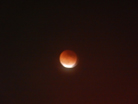 Time: 20:38 view larger image |
September 30, 2015: Super Moon Total Lunar Eclipse 9/27/15
|
||||||||||
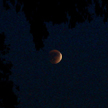 view larger image |
September 29, 2015: Super Moon Total Lunar Eclipse 9/27/15
|
||||||||||
 view larger image |
September 29, 2015: Super Moon Total Lunar Eclipse 9/27/15
|
||||||||||
 view larger image |
September 29, 2015: Super Moon Total Lunar Eclipse 9/27/15
|
||||||||||
 view larger image  view larger image |
September 29, 2015: Super Moon Total Lunar Eclipse 9/27/15 "The Moon appeared larger than normal because the Moon was just 59 minutes past its closest approach to Earth in 2015 at mid-eclipse, sometimes called a supermoon." -- this is the report and definition of supermoon written by Wikipedia. Fortunately, I successfully watched the whole process in campus and captured the supermoon in my camera. By coincidence, this time, the supermoon and lunar eclipse were at the same time during Chinese Mid-Autumn Festival. It is a rare phenomenon due to the fact that the last time when a supermoon lunar eclipse took place was in 1982 and the next will happen only in 2033. I felt pretty lucky to see the supermoon lunar eclipse in school. (Haoran Zhang, SIO15 student, 2015) |
||||||||||
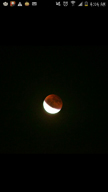 view larger image |
September 29, 2015: Super Moon Total Lunar Eclipse 9/27/15 I had a chance to take a photo of Super Moon. I saw this phenomena [] by coincidence and it was beautiful. I never had this experience of watching such mesmerizing look of super moon and I liked it so much! (Taehun Kang, SIO15 student, 2015) |
||||||||||
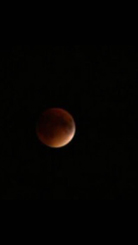 view larger image "The Super Moon that I saw last night on campus" (Junhee Bae, SIO15 student, 2015) 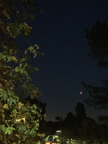 view larger image "My roommate and I sat outside for 20 min just admiring it :)" (Jamie Kuwae, SIO15 student, 2015) |
September 29, 2015: Super Moon Total Lunar Eclipse 9/27/15
| ||||||||||
|
September 28, 2015: 2006 Snow Storm in Beijing, China A natural disaster happened in Beijing, China. I remember when I was ten, my father drove a car from Rizhao (a small city in China and also my hometown) to Beijing with all our family members. We planned to go to my uncle's home to celebrate the Chinese lunar year festival. But on the way to Beijing, we experienced a really heavy snow storm. At first everyone did not care about the bad weather and still drove really fast on the freeway, but later the snow turned into ice on the ground. The road became really slippery with little friction. The cars, which were really fast, lost control when the drivers tried to brake. A lot of cars strayed away from the road and severe collision between several cars happened. Several people died from the car accidents. Luckily, we did not get into trouble, because my father drove really slow and paid attention to other fast cars. (Su Zhang, SIO15 student, 2015) |
|||||||||||
|
September 28, 2015: 2011 Tohoku, Japan Earthquake and Tsunami After I graduated from a middle school in Korea, I took Korean GRE test for a high school diploma in 2009. The reason that I decided not to go to a high school was to spend almost all my time on studying for admissions to universities in Japan. I studied Japanese, mathematics, physics, and chemistry for about two years. In March 2011, I finally booked a flight ticket to Japan and I was very excited to actually live and study in Japan. However, about two weeks after I booked the ticket, a powerful earthquake occurred in Japan. In addition, nuclear plants in Fukushima had explosions caused by tsunami. Due to the radioactivity from the exploded plants, not only people in Japan but people who had planned to go to Japan like me started to worry about being in the country. Since it was a severe problem, I had to cancel my flight and give up my dreams in Japan. (Junhee Bae, SIO15 student, 2015) |
|||||||||||
|
December 18, 2014: Pineapple Express in San Francisco Five years ago I experienced the biggest storm to hit San Francisco. I clearly remember getting to school was a huge hassle. The car ride to school was terrible; the hour was spent trudging through the floods on the freeway, dodging fallen tree trunks on the road, and trying extremely hard to see the road. I clearly remember when the wiper failed to keep the rain away from clouding the front wind shield. At that point so many cars had pulled over due to the lack of visibility. The storm was still at its highest point as I recalled getting completely drenched while trying to enter the building since my umbrella could not hold up to the intensity of the pouring rain. I reminisce of that day because just last week, San Francisco was issued a flash flood warning and was due to experience the 'heaviest rainfall since 2008.' Taking this class allowed me to deduct that this heavy rainstorm and high winds storm was fueled by 'Pineapple Express.' Luckily, San Francisco made better precautions in notifying the residents of the city than it did back in 2008. With the whole public facilities (libraries and schools) closed for safety precautions, at least those middle schoolers didn't have to go through the terrifying experience that I had to encounter! (Michelle Tran, SIO15 student, 2014) |
|||||||||||
 view larger image photo from riadzany.blogspot.com |
December 09, 2014: Natural Disasters in Morocco, Africa Morocco, is a country in North Africa that is regularly facing some natural disasters, such as earthquakes, floods or even droughts. Pondering upon the source–or should I say–reason of these disasters has been the primary issue for Morocco's inhabitants. Morocco's weather obviously changes from a city to another, starting from the north where cities like Tangier, Tetouan, etc. where humidity can attain more than 87%, to the south, in the western Sahara where the weather is unduly dry, and a relative humidity that can go under 10%. Nevertheless, chiefly umpteen earthquakes have been recorded in Morocco, predominately between 1960 and 2005. A great number of earthquakes occurred in that location, that we would call sporadic earthquakes, only felt for very few seconds and don't have any outcomes. Nonetheless, two of the most disastrous calamities have been in:
|
||||||||||
|
|
December 09, 2014: Recycling/Re-Use of old Computer Batteries I recently found this article. We were talking about energy and electronics in one of the recent lectures. And this article found that old laptop batteries could be used to give electricity to impoverished areas. Link to www.technologyreview.com/news/532896/discarded-laptop-batteries-keep-the-lights-on (Jacob Roth, SIO15 student, 2014) |
||||||||||
|
|
November 24, 2014: My Internship at an Indian water treatment/conservation/recycling company I have lived in Boston, Beijing, Kobe, Hong Kong, France, Singapore, Shanghai, Texas, and now California, but was always fortunate enough to never have to suffer from a natural disaster. Interning in India was life-changing and eye-opening, as I saw firsthand what the consequences of a lesser known natural disaster look like. India's drought is so terrible that it was difficult to wrap my mind around how people could live like they did. Contrary to popular belief, it wasn't just the rural areas - I stayed at a family friend's house in New Delhi for one night in between traveling from Jabalpur to Singapore, and he said that his family received one hour of running water in the morning and one hour at night. And they considered themselves lucky! Many people couldn't afford any water in their homes, so they had to walk miles and miles to get to a public water pump and fill up bottles and buckets, and repeat that every single day. The water conservation facts I learned were incredible - for example, only 1.5 liters of water are necessary to flush a toilet, so the toilets we used had small buckets of that size for us to flush with. American toilets on average use anywhere from 6-10 liters of water for each flush! Wastewater could be thoroughly filtered and recycled for non-potable uses like irrigation, toilet flushing, showering, and dishwashing. Solid waste that was filtered out from wastewater could be dried and burned for biofuels that are used for cooking, lighting, and heating. While America seems like the best place to switch to water conservation appliances, it is extremely expensive to change entire toilets, washing machines, dishwashers, shower heads, and other water-using appliances to water-efficient ones, so it hasn't been very popular thus far. For this reason, I am extremely optimistic and motivated to implement water-saving techniques in homes all across India, beginning with places that don't even have kitchens and bathrooms, so the only cost is putting in the appliance instead of switching it. (Mio White, SIO15 student, 2014) |
||||||||||
|
|
November 19, 2014: Reflections on the 2003 Cedar Wildfires I was 9 years old, attending 4th grade at Ellen Browning Scripps Elementary School when the wildfires burned through the city of San Diego. The homes and communities within Scripps Ranch (where I lived for a time), were heavily affected by these severe wildfires and as a result, many residents were ordered to evacuate. The level of intensity of these wildfires was unbelievable as far as I can remember. The skies were dark red, spark-filled air hot and hard to inhale. At a distance, I recall seeing the height of these fast moving flames towering over adjacent homes. The year of 2003 was tough for San Diego. At 9 years old, I had a bittersweet feeling about this devastating disaster. Not only did the wildfires forced my family to evacuate closer to the coast, specifically Solana Beach but also closed down many schools in San Diego County including my own. Sirens from fire-trucks as well as ambulances were always heard at the time. Grocery and utility stores were suddenly filled with people seeking to stock food and water. Much to my family's fortune back then, only our backyard was affected. To this day, whenever I drive by my neighborhood, memories of the 2003 Cedar Wildfires always flash back. It's important to acknowledge how large of a problem wildfires are in San Diego. For native San Diegans like myself, although we are blessed by beautiful weather most of the time, wildfires are and will always be a part of life. (Ian Le Tran, SIO15 student, 2014) |
||||||||||
 view larger image USGS photo taken Nov 13, 2014 |
November 14, 2014: Kilauea's Lava flow I was reading through some of the articles and came across this article where it talks about the lava flow from Hawaii's Kilauea volcano consuming a house within 45 minutes. Before taking the class and coming across the topic of the volcano, I had no clue that lava flow was not the most lethal part of the volcano eruption. However, after taking the class, it seems that lava flow causes most damage rather than fatality. If it wasn't for this class, I would have simply skipped over this article. Thank you for introducing me to the details of a volcano eruption. Nov 12, 2014 "Lava Flow In Hawaii Incinerates Its First House" click here at IFL science (Kyung Rin Lee, SIO15 student, 2014) |
||||||||||
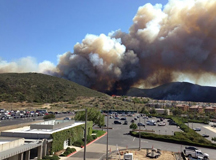 view larger image campussafetymagazine.com via Twitter |
November 14, 2014: May 2014 Cocos Fire Since we are learning about wildfires, I wanted to tell you about the fire near CSU San Marcos. My friend and I were going college touring and saw the wildfire heading towards campus. We had heard about the wildfires in San Diego County but didn't think they would get so close! I didn't get a picture but I found one online! Honestly I was terrified. San Marcos has a relatively low elevation, since it's surrounded by mountains. I had to beg my friend's mom to park on higher ground to let me watch the fire. Even then, I could only see the smoke. I remember it being pretty windy and hot, but I don't know if the heat was from the summer season, wildfire, or both. (Jiwon Seung, SIO15 student, 2014) |
||||||||||
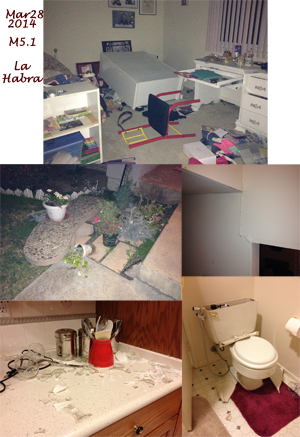 view larger image |
October 18, 2014: March 28, 2014 La Habra earthquake It was on Friday, March 28, 2014 in the evening at home in north Orange County. I was just about to leave home back to UCSD. I finished packing and was ready to hit the road. In the process, I felt a couple jolts; my family members confirmed that they felt them too. I went upstairs with my mom and brother to talk to them about their weekend plans. We were standing at the top of the staircase. All of a sudden, the whole house started shaking. My mom screamed; I pulled my mom underneath the doorframe of the room closest to the stairs before she lost her balance. My brother ran under his bedroom doorframe. My dad was downstairs watching TV, but he has always been prepared for natural disasters. We heard my mom's fine china break out of the cupboards, my dresser fling off of my bedroom wall despite being attached to the wall, and the walls crack and shake. Once the floor and house stopped moving, my family and I went outside to meet our neighbors in the cul-de-sac. Everyone was checking on one another, especially the elderly people who lived on our street. When the worst was over, my dad, mom, brother, and I went to each of the houses on our street to help our neighbors fix their bursted pipes and move the furniture back into place. After, we inspected our house. The house shifted west about an inch all around. The walls were cracked, and everything was in disarray (see photos). When we read the news articles, we discovered that we were just a few blocks away from the epicenter. Here is a KTLA news article about the earthquake. (Keili Fernando, SIO15 student, 2014) |
||||||
 view larger image |
October 7/8, 2014: Total lunar eclipse Here're some photos I took this morning (night?) of the eclipse. My friends and I went out around 2 o'clock and watched the whole process of the eclipse, and it was so wondrous! Although it's not much of a "natural disaster", after today's class I'm really curious about how the "red moon" comes into being. During a total lunar eclipse, the moon is blocked by Earth to receive sunlight. The red moon, sometimes called "Blood Moon" is caused by a bit of sunlight that is bent (scattered and refracted) around Earth's edges (i.e. its atmosphere). Blue light is bent much more so that red light dominates by the time the light arrives at the Moon. (Zhihao Zhang, SIO15 student, 2014) |
||||||
 view larger image |
December 10, 2013: Dwindling shark population worldwide While studying for the final I came across this article. Prof. Laske touched up on the declining shark populations and this article describes just that. It is very shocking to know that the decline of such species that many fear could lead to the destabilization of entire ecosystems! People need to be informed about this to prevent future damage. http://www.foxnews.com/science/2013/08/06/dwindling-shark-population-worldwide-affects-ocean-ecosystem (Dennis Dolginov, SIO15 student, 2013) |
||||||
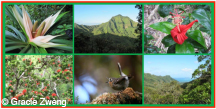 view larger image Some native plants and animals of Oahu. |
December 08, 2013: Hawaii's native bird population As Professor Laske talked about various reasons for the recent extinction of certain species, I realized how relevant this discussion was in regards to the animals from my home state. As mentioned in lecture (# 23), the Kauai O’o became extinct in 1987 due to "habitat loss, predation by the introduced black rat and disease by exotic mosquitoes". Unfortunately, this story of extinction extends to many of the native Hawaiian birds. By chance, my dad, although a geologist by training, is an avid conservationist and has decided to dedicate the rest of his life to preserve and to restore the endemic flora and fauna of O'ahu. I grew up visiting the botanical gardens of Hawaii and constantly hearing about his passion for the unique native species of the islands, especially that of the 'Elepaio. The 'Elepaio is still fairly common on the Big Island and Kauai but the population of the native bird on O'ahu has deteriorated significantly, federally listed as endangered. Just as Professor Laske discussed, the native bird is endangered due to the loss of its habitat. It is interesting to note that the island of Oahu is the smallest of all the islands but houses about 3/4ths of the state population. With this in mind, it seems undeniable that humans have negatively impacted the environment and the 'Elepaio on O'ahu are suffering. The urbanization of what was once untouched paradise is negatively affecting the indigenous flora and fauna of Hawaii. (Gracie Zweng, SIO15 student, 2013) |
||||||
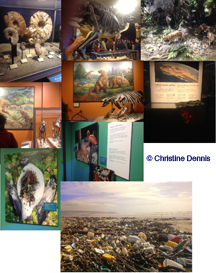 view larger image |
December 08, 2013: San Diego's Natural History Museum On Friday I went to the Natural History Museum in Balboa Park with my fiance. I was able to see some great examples of some of the material covered in class last week. We viewed the extinction exhibit and were able to see lots of bones and models. I saw common dinosaurs, ammonites, and ice age animals like the sloth. I also played with some interactive models that related to class like "Where plates slide - Transform fault." After that, we went into the water exhibit. There were a lot of things in there that Prof. Laske mentioned from lecture 25 on Wednesday. There were examples explaining the problems in the fishing industry. I was able to explain a lot to my fiance and gave him a mini lecture reviewing what we learned in class about by-catch, including the statistics. There was also some pictures on the sad outcome of plastic in our oceans, like shown in class, a bird with a stomach filled with plastic. And as a finale to the exhibit, a picture of my home beach, Imperial Beach, covered with plastic. I have attached a mini picture collage of the items I described in this story. (Christine Dennis, SIO15 student, 2013) |
||||||
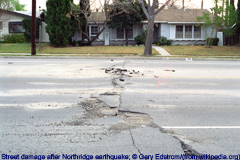 view larger image  view larger image |
December 04, 2013: The 17 January 1994 Northridge Earthquake I was just a baby when I experienced my first natural disaster. It was an earthquake that occurred in January of 1994. I was less than a year old so of course I don't remember it but I have been told about it many times before. According to my parents, I slept through this massive 6.7 earthquake. It occurred at 4:30 am and as my parents described it, it was as if the entire house was being shaken. I lived very close to Northridge at the time, in the city of Reseda. The earthquake was so massive that it caused the freeway to collapse down the street from my house. We ended up having to move houses after the earthquake because the damage was so severe to our house. The roof started to leak, the chimney broke, our brick fence was completely tore down, there were cracks in the wall throughout the entire house, and everything in the kitchen was destroyed. My mom told me that she spent four hours cleaning out the kitchen of shattered glass, which ended up being five bins of garbage. We had an outside porch, which was connected by beams to the roof, and the beams ended up splitting in half. We ended up not having electricity after the earthquake so we had to go stay at a friend's house for the next couple of days. My parents didn't have cell phones at the time, so there is no pictures of the house being destroyed but, this earthquake will always be remembered in my family because it was the biggest one that we have ever experienced and the one that has caused the most damaged to us personally. (S.H., SIO15 student, 2013) |
||||||
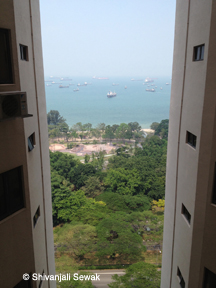 view larger image |
December 04, 2013: Singapore Haze from Slash-and-Burn Farming in Sumatra I remembered an incident from this summer and just thought I'd share it with you. This past summer, on my way to Fiji, I stopped in Singapore to meet up with my uncle. He lives on the top floor of his building and told me that Indonesia is generally visible from his balcony. During the time I visited, however, the Sumatrans were doing their crop burning and the clouds were being pushed by the wind to Singapore, which was covered in this grayish haze. I don't know if the picture attached presents the best view of how hazy it was but from his balcony I could see the huge clouds coming from far-off. It was interesting to see how this man-made incident could mess with people from a completely different country. (Shivanjali Sewak, SIO15 student, 2013) |
||||||
 USGS intensity map view larger image 02/02/2003 Dublin, CA earthquake page of the California Integrated Seismic Network (CISN) |
December 04, 2013: 2003 Earthquake in the Bay Area On the morning of February 2, 2003, a 4.1 magnitude earthquake hit the San Francisco Bay Area. I was about nine years old at the time but I remember the experience vividly. My grandmother and I had been sitting in our guest room watching TV when all of a sudden, my grandma got up and told me that she wanted to move to our living room. I didn't know why she wanted to leave but followed her into the living room like she had asked. Not more than five minutes later, we felt the jolt of an earthquake and heard a crashing noise come from the guest room. After the earthquake was over, we ventured into the guest room, only to find that the floor-to-ceiling mirrors had shattered. Shards of glass littered our guest room and my grandmother and I stood there, dumbstruck. To this day, I have no idea how or why my grandmother had that compulsion to move out of the guest room but I am so, so thankful that she did. (Shivanjali Sewak, SIO15 student, 2013) |
||||||
 view larger image MODIS Image (NASA Earth Observatory) on August 25, 2005 at 12:30 pm EDST. Katrina had just become a category 1 hurricane when it approached Florida. |
December 03, 2013: Hurricane Katrina: August 2005 I was living in Miami, Florida when Katrina hit. I remember not having any electricity and going out to eat dinner while there was a huge thunderstorm the night that Katrina hit Miami. I remember being terrified in the car because of the crazy wind speeds and the fact that you couldn’t see outside your window and that there were things just flying everywhere. My parents realized what a stupid decision it was to go out to dinner while a hurricane was hitting Miami, so we quickly turned back around and tried to get home, as safely as possible. When we finally got home, my sister and I were trying to stay calm and distract ourselves by playing with dolls. I remember very well that our front door was shaking like crazy and my dad was really scared that it would fly into our house. So to prevent that from happening, we put a bunch of furniture against the door, to try to make it stronger and more stable. The next morning was even worse because when we walked outside, two of our very large trees, one was an avocado tree, had fallen down. One of them fell on top of our house, which was just devastating. It’s crazy to think that a hurricane is so strong that it can make a huge tree fall over. We were very blessed that nothing more happened to us, other than having a lot to clean up. (Irina Hoffmann, SIO15 student, 2013) |
||||||
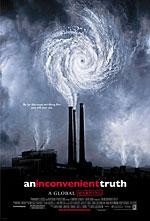 go to takepart.com for the official website of An Inconvenient Truth. |
November 23, 2013: "An Inconvenient Truth" I just watched the documentary and I was completely moved by the global warming problem. I decided to do a bit more research, and I found this: http://scienceandpublicpolicy.org/monckton/goreerrors.html Is this true? Perhaps Al Gore did exaggerate some facts, but I am still a strong believer in global warming and supporter of reducing it to save our planet. Also, I think many students will feel the same way if you show this documentary in class. Reply Laske: yes, there are some inconsistencies in the movie, as I had pointed out myself in class with the melting of the Kilimanjaro ice cap [NB: the ice cap may be shrinking because local deforestation make the local weather drier)]. The topic of global warming has reached such religious proportions that it's really hard to convey all the facts without making any statements that others can find mistakes in. And yes, 7 years after "Inconvenient Truth" came out, we know things a bit better (1) and Gore may have used some exaggerations to get the point across (2). Plus "global warming" is a moving/evolving target. That's why the IPCC came out this year with an update of the 2007 report. (Khanh Nguyen, SIO15 student, 2013) |
||||||
 view larger image 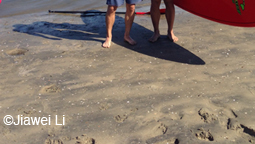 view larger image |
November 23, 2013: Mission Bay This is a picture I took during the summer in Mission Bay, San Diego. The photo was taken back in August when I went paddle-boarding with my friend. We learn from our Earthquake lecture that Mission Bay in San Diego would likely to experience liquefaction during an earthquake because of its location. It is a low-lying area of loose, water-saturated sediments. As shown in the picture, the land surrounding water is very flat, wet with loose sand so that the movement of an earthquake can cause liquefaction in this area. (Jiawei Li, SIO15 student, 2013) |
||||||
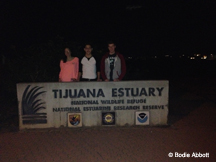 view larger image |
November 15, 2013: Tijuana River Estuary Earlier this week, we went to see the Tijuana Estuary outside of Chula Vista. We looked around and were very interested in the estuary. It was very cool to see in person after hearing about it in class. Thanks! (Bodie Abbott, Shanna Puruncajas and Pedro Torres, SIO15 student, 2013) |
||||||
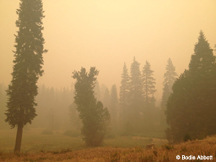 view larger image |
November 15, 2013: August 2013 Rim Fire this summer I visited Yosemite during the RIM fire. I visited on one of the days when the wind brought the smoke into Yosemite Valley. You really couldn't see very far at all with the smoke. This photo was taken at Fish Camp Meadow. (Bodie Abbott, SIO15 student, 2013) |
||||||
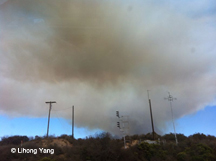 view larger image 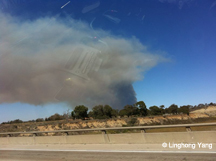 view larger image |
November 05, 2013: Camp Pendleton Wildfire These two pictures were taken on the afternoon of 5th Oct 2013. My friend and I drove from San Diego to Irvine. We took these pictures on freeway I-5. At first, we noticed that there was a huge dark cloud. When we drove closer, we found that it was not a cloud but a dense smoke caused by fire. When we reached the smoke, the sunshine was blocked and we were under the shadow of the smoke and we had to remove our sunglasses in order to get a better sight. At midnight, we drove back to San Diego. There was a strong burning smell when we passed the fire spot. I searched this fire online, which showed that it happened in Camp Pendleton North, CA. Here is the link: http://projects.scpr.org/firetracker/deluz-fire (Lihong Yang, SIO15 student, 2013) |
||||||
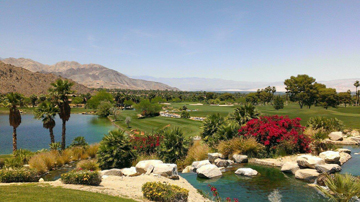 view larger image 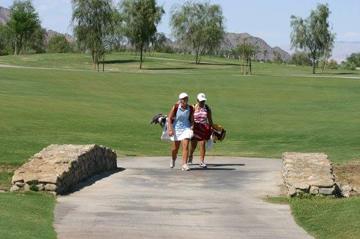 view larger image |
November 04, 2013: Ironwood Golf Course, Cerritos These pictures were taken at Ironwood Golf Course in Cerritos CA, around 2 hours north of San Diego. The pictures were actually taken 4 years back with my friends from high school. Although not as grand as the golf course now owned by Donald Trump, the fact that this course is constructed inland on a flat ground only surrounded by hills with a flat slope ensures slumping would not pose an issue to the course. (Dominc Fong, SIO15 student, 2013) |
||||||
 view larger image 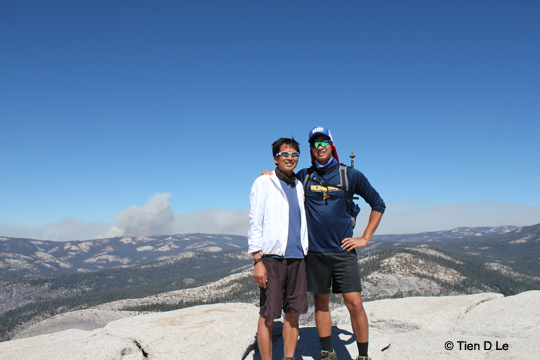 view larger image 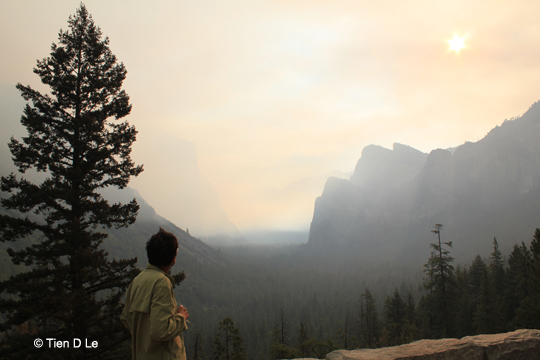 view larger image |
October 24, 2013: The August 2013 Rim Fire in the Yosemite area This past summer I went to Yosemite National Park with my dad. We hiked the Half Dome and enjoyed the wilderness. We were very fortunate because the recent fires almost ruined our trip. The day we arrived to Yosemite the skies were clear and glorious. The day of the hike we could see the smoke from the fires to the north. When we left the next day, the valley was submerged with smoke. I've attached some photos of the hike. During the lecture about wildfires I knew I had to show you them! (Tien D. Le, SIO15 student, 2013) |
||||||
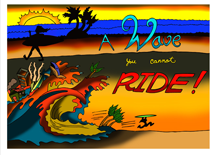 go to squidtoons |
October 02, 2013: Squidtoons Former SIO15 student Garfield Kwan started a project to make science more understandable than regular classes, and also teach science in a more exciting way that conventional textbooks. He teamed up with fellow student artists and founded Squidtoons. At the time of this post, they created 3 really cool comic strips on the trippod fish, heat waves and a panorama for marine biology. We are looking forward to many more squidtoons to come. (Tsz Fung Garfield Kwan , SIO15 student, 2012) |
||||||
 view larger image 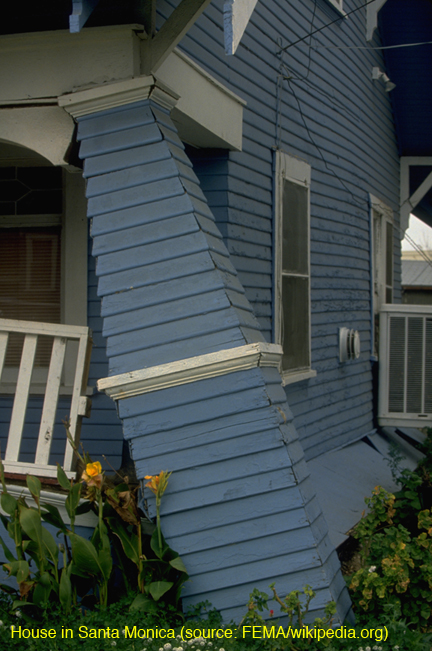 view larger image |
December 06, 2012: The 17 January 1994 Northridge Earthquake The first earthquake I ever experienced occurred on the morning of January 17th, 1994. The 6.7 Northridge earthquake occurred on Reseda, the street I lived on at the time. The ground acceleration was one of the highest recorded in an urban area in North America. The earthquake went as far as Las Vegas in Nevada. I lived in the neighborhood called Porter Ranch within San Fernando Valley, the north side of Los Angeles. I was two years old. Sure, I don't remember much of this event but my parents beg to differ. If it weren't for my father, I would not be here today. It happened at 4:31 in the morning. I was asleep, lying down between my parents when the earthquake occurred. My parents woke up and their natural instinct was to grab me and evacuate. As my dad reached for me, the TV that hung on our wall fell off. My dad took the hit, covering me with one arm and blocking the TV with the other. Luckily he wasn't severely injured. Listening to this story gives me the chills every time. This one incident could have taken my life away. Because of this, natural disaster always hits a very personal spot for me. Whenever I hear about certain incidents, it's very easy for me to empathize with the people. (L. L., SIO15 student, 2012) |
||||||
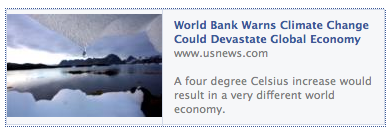 link to US News |
November 19, 2012: on the impact of a 4°C temperature change Earlier today you talked about Milankovitch cycles [(Lecture 21)] and how they can change temperatures by up to 4 degrees Centigrade. I happened to come across this article in US News about how a 4 degree temperature change would devastate the economy. I thought it was a pretty interesting read since it nicely coincided with what we talked about today. (Justin Sun, SIO15 student, 2012) |
||||||
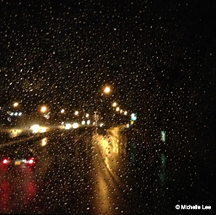 view larger image |
November 14, 2012: Superstorm Sandy, October 2012 My friend, Michelle Lee, recently went to go study abroad in Washington DC. Little did she know, her California girl personality would be affected by Hurricane Sandy. Luckily for her, she said in her part everything was safe. She said she just felt like everything was a big storm, and it was very cold. All the places around her had to be shut down -- she couldn't even go to work! She definitely said it was a unique experience to be in, especially since she's not used to storms like this being from Southern California! She feels very blessed that so far nobody in her area has been hurt, and she has her whole church praying for her back home. (Catherine Yu, SIO15 student, 2012) |
||||||
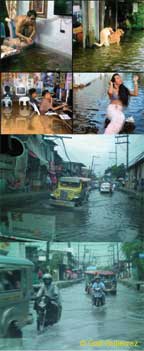 view larger image (top 4 from instagram) |
November 06, 2012: Monsoons in the Philippines, August 2012 Monsoons swamped through the Philippines in early August. Flash flooding and heavy rains took over Luzon and parts of the Visayas regions. Keeping up with the news while traveling throughout the country, I learned that many families did not evacuate their homes until the roads were too submerged in water. One of the images I remember is of a baby floating in a large plastic storage container as her family swam through the flood. While some made light and humorized the current weather situation (see picture below), most Filipinos continued to carry on their small businesses and daily routines. There were a few rescue trucks that transported refugees to safe locations. On my way to a family's house in Malabon, a city within the Metro Manila sub region, our van became our life boat as we struggled through a meter deep of water. Most barangays ("town" in Tagalog) do not have proper drainage systems, thus water became trapped wherever it flowed. Also, black outs and flight cancellations were very common. When I flew to Bohol, an island in the Visayas region, weather was completely different. The sun was shining, and there was no sign of rain. Our tour guide told us that surrounding islands protect Bohol from any extreme natural disasters. On the airplane back from Manila, I could see everything covered with water. Buildings were almost non- existent, and roads came in and out of ponds of water. After the major flood in Marikina City, the water took several days to drain. (Gail Gutierrez, SIO15 student, 2012) |
||||||
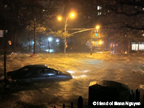 view larger image also on imgur.com |
October 29, 2012: Hurricane Sandy I have several very close friends who go to school on the east coast and are in areas that are being affected by the hurricane. Also, all of this is very relevant to what we are learning in class and having learned that hurricanes can cause a lot of damage, I wanted to make sure that my friends are ok, so I told them to be safe, be prepared, and make sure they have enough food and water. Here is my friend Neesha's thoughts on the hurricane. She goes to school at Georgetown which is located in Washington DC. Currently, her college is closed for a couple of days and classes are canceled. "I am grateful for the campus for having such a great emergency system in place. We are getting constant updates from campus via phone, text, and email. They have given us great guidance on preparing for this disaster and what to do in case of emergencies" - Neesha Tambe, Georgetown University '13 My other friend Alice goes to University of Pennsylvania located in Philadelphia, Pennsylvania. Classes at her school have also been canceled. She told me that she has been stocking up on food and water and cooking all the perishable food in her refrigerator. Additionally, she says that there are huge lines at the grocery stores with everyone trying to buy food. Her college has started reserving hotels nearby in case electricity and utilities are shut down for students who live on campus housing. Alice says that there is flooding everywhere and it's hard to go outside because it's very windy. I know that hurricanes are somewhat common on the east coast, especially around Florida, but this hurricane is an extremely serious one and I hope that everyone affected by it is okay and there are no serious fatalities. (Iliana Nguyen, SIO15 student, 2012) |
||||||
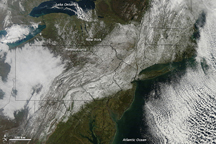 view larger image MODIS Image (NASA Earth Observatory) |
November 1, 2011: October Snowstorm in New England This morning my husband and I got our first call from my in-laws since the snowstorm hit New England last weekend. They live in Southern New Hampshire, and during this storm, they received 13 inches of snow. They are both ok but have been without power and without a phone line since the storm hit last Saturday. They are not expected to have their power back until this coming Friday or Saturday. In the meantime, they use candles and flashlights in the evenings and mornings as they get ready for work. (Yes, even with all the snow, they still have to go to work.) They go outside to collect water from a little stream near their house so that they can flush toilets; they go to the local high school to shower, and they cook using a camping stove. The contents of their refrigerator and freezer have been moved to a snow bank outside. They consider themselves very fortunate because they heat using a wood-burning stove, so they are able to live at home; whereas many of their neighbors are living in the high school gym because their heat no longer works. In New England, storm preparation is an accepted part of life, and people plan ahead, rushing to the store to buy milk and bread the night before a storm is supposed to hit. Most of New England is heavily forested, especially in rural areas, and during storms tree limbs break, frequently taking out power and phone lines. Since this happens all over New England, it is not uncommon for people to go days without electricity. During the winter, clean-up time is further delayed by inclement conditions. My in-laws have lost power for at least a week during three of the past five winters. (Heather Cook, SIO15 TA, 2011) |
||||||
| September 26, 2011: 2010 Mudslides in La Canada In the early months of 2010 in the small suburb of La Canada, where I went to high school, there was heavy rainfall resulting in home and life threatening mudslides. These mudslides pushed people out of their homes and made people take their most prized belongings with them. My high school's gym, La Canada High School, became the evacuation center and shelter for people who were pushed out of their homes. It was a very sad time and at the same time I felt good about my high school for providing such a commodity. I was devastated when I heard that my elementary school friend's house, which was located near tall mountains with heavy mud/dirt, was ravaged by these heavy mudslides. Barricades were put up in the areas that were most prone to the dangerous mudslides, but these barricades were often destroyed and defenseless to the mudslides. As I look back on this local natural disaster I experienced, I am thankful that my mom thought ahead and chose a home location accordingly to the possible natural disasters that could occur at any given time. Natural disasters are extremely scary and I learned that they are merciless and can happen at any time. (Michael Lee, SIO15 student, 2011) |
|||||||
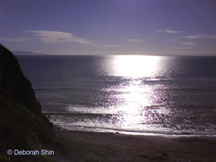 view larger image |
October 27, 2009: Lecture on Slumping Problems on the Palos Verdes Peninsula (Lecture 13) [The lecture described how the golf course, now own by Donald Trump, lost some of its hole to slumping and how the problem was fixed.] I'm a student from Palos Verdes. Here are some pictures I took on the trail off the side of the Trump Golf Course. The picture with the Sun reflecting off the surface of the ocean - there's no photoshop! It's really that gorgeous. (Deborah Shin, SIO15 student, 2009) |
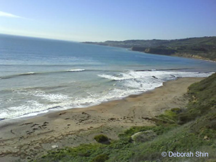 view larger image | |||||
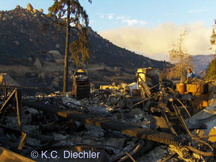 view larger image 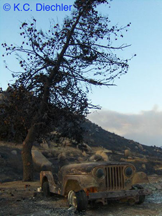 view larger image |
November 25, 2007: The 2007 San Diego Fires The San Diego County Wildfires did not really impact me at all, thank god my house was not at risk, and I was not affected by the air quality. I live in Chula Vista very close to the J St marina and i think that might have been why the smoke was not so bad. The week of the fires was crazy especially because I currently intern for 10News, during the beginning of the week when the fires were at their peak we were told not to come in, but towards the end of the week when the fires had been contained, i was able to go into the damaged communities and actually see the damage first hand. It was incredible how the fire completely burned down one house and then spared the neighbor's. 10News was working on a story about the air quality and the possible dangers we face from inhaling the ash floating in the air. We visited Otay Ranch, Poway and Rancho Bernardo to collect ash samples and had them sent to a lab to get tested. They were sent to get tested for toxic chemicals from plastics that may be harmful to our health once inhaled, I still have not heard the results from the tests. The pictures i am attaching are of a friend of mines Jamul home. Unfortunately her house was completely damaged by the fires. As you can see from the pictures the damage is devastating and there were very little remains left. I am very glad that San Diego did not have very many fatalities during the wildfires but i do hope that San Diegans will learn from this devastation and maybe take some more precautions. The Pictures were taken by my friend KC Diechler. (Isabella De Pierro, SIO15 student, 2007) |
||||||
 view larger image 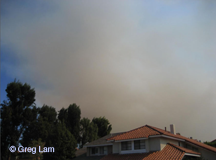 view larger image  view larger image |
November 25, 2007: The 2007 San Diego Fires Although the fires in San Diego were not a huge concern for me personally, I instead was in Orange County dealing with the Santiago Canyon fire. Two days before the fire broke out I had driven up to Irvine, where my parents live, to housesit for the weekend. On Sunday night my boyfriend and I were out at dinner when my neighbors, who had recently walked our dogs, called me frantically saying that we had to come home immediately because Northwood (my parent's community) was on fire. We rushed home to find that one of the main roads to get to my house was closed because the fire was at the far end of the street. My parents live on the west base of the Santiago Canyon and the firefighters main priority was to keep the fire from jumping the street Portola Road, which was about a half a mile from my house. As soon as we got to my house the street and all the cars looked as if it had been snowing newspaper bits and there was so much smoke in the air that you couldn't breathe. The fire was so close that you could actually see a strong red glow from my bedroom along with a huge black cloud looming over my house. Luckily my neighbor had closed all the windows and doors to keep the smoke out. I woke up my parents, who were in Oklahoma, and they told us what to pack. They managed to change their flight at the last minute, but in the meantime we nervously watched the TV and listened to the radio waiting to see if we had to evacuate. The house remained pretty hot and there was a horrible smoky smell. After about two hours, at around 11pm, they were issuing voluntary evacuations for my neighborhood, but they were convinced that the fire would stop at Portola Road. We kept the cars packed up and ready to go and at about midnight a neighborhood about a mile from our house was issued a mandatory evacuation, but still nothing for us so we went to bed. We woke up at 6am the next morning and the fire had luckily changed directions from NW to SE and was no longer a main concern for our neighborhood. For the next week the air remained extremely smoky and it continued to snow ash. There was also still an eerie orange glow with lots of black clouds in the sky. The three photos I included are of: the drive through San Diego, our pool after a week of the fire, and the sky above my parents' house near the end of the fire. (Greg Lam, SIO15 student, 2007) | ||||||
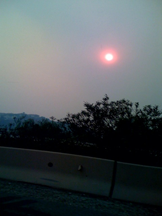 view larger image |
November 09, 2007: The 2007 San Diego Fires I took this photo in the car on my phone while I was evacuating during the fires. The sun, although not as visible here, was bright red at around 4 in the afternoon. It was quite a sight. (Chelsea Lam, SIO15 student, 2007) | ||||||
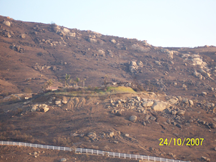 view larger image 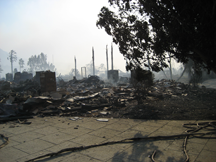 view larger image |
November 08, 2007: How the 2007 San Diego Fires Affected Me Although the fires did not directly affect me, all my roommates' families unfortunately were. On Sunday already, my roommates Mother was evacuated in Ramona so she went out to help her get some things. The rest of my housemates did not think to much about the fire. That evening before going to bed my roommates mother called us and told us she had gotten reverse 911 calls but beyond that police with bull horns went through the neighborhood asking for evacuation. Her mother along with their neighbors looked at the traffic to get out, which was not moving, and decided to stay. Good thing she did because later in the week we found out more about Ramona from her. Later in the week they had closed the roads going into Ramona. The town basically looked like a ghost town according to her mother except for the National Guard marching up and down the streets. Earlier in the week the town had had problems with looting. All my roommates' family ended up being ordered to evacuate. The pictures included in this email are from another of my roommate's neighborhood. She lives off of Old Coach road in Poway. According to her family they were ordered to evacuate Monday morning. The fire reached her neighborhood soon after they had left. This area is very spread out and their wasn't enough fire crews so the neighborhood was left to it's own defenses. Most of the neighborhood was burned down except for about four houses. For most of Monday she thought she lost her house until a inspector got back into the area and informed her family it was still there. What her neighborhood showed is just how quickly this fire moved through areas and how fast it was spreading with the help of the Santa Ana winds. I am from the Mojave Desert and am very familiar with wildfires. In fact while San Diego was being affected by these fires two fires one being the slide fire were affecting my hometown. What this fire showed me though is just how long damage can last. Ramona for instance had a water generator go out making the city use bottled water for about a week. My roommate's house that was barley saved from the fire was supposed to go without electricity till November 9th. Thank goodness it went up earlier. What I noticed about this fire was just how much San Diego and Southern California had learned from the fires four years ago. Evacuations in my opinion gave most neighborhoods plenty of time allowing firefighters to worry about the fire rather than individuals. Wildfires will continue to occur in California. Hopefully the residents will learn something new about fires making the situation move more smoothly.
The first photo is where a neighbors house was on a nearby hill
The Second Photo is another neighbor's house.
| ||||||
 view larger image |
November 08, 2007: The 2007 San Diego Fires I was driving on the I-5 North bound, on my way to Los Angeles on October 23rd when I first encountered a wild fire in such a close rage. I was not expecting to see the fire so close to the freeway by Camp Pendleton. Even though I had turned my air conditioning to inside circulation, where air is recycled within the car, the burnt smell found its way into my car's circulation system. I felt like I was suffocating from the lack of oxygen. In some way, I felt like I was running away from the problem by going up to LA and taking the advantage of having no school. But, I could not bear the air quality in the San Diego area at the time. In addition, I know a few people who had to be evacuated from their home in Mira Mesa area, close by the 15. Gladly, their houses and family were okay. But it was very unfortunate for many of the people who has lost everything they had in their houses.
Some of the wild fires that occurred were caused by arson. I cannot image people purposely set the grass on fire. What were they thinking? Do they feel that San Diego is a place where it needs to be on the national news for disasters? I feel that the community is stronger than ever because of what had happened. But I do not think that we need an event such as this to happen for us to realize our unity. I know that all of us will get past this obstacle.
| ||||||
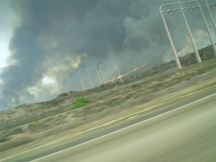 view larger image |
November 07, 2007: The 2007 San Diego Fires Felt Like the End of the World My roommate and I drove to LA on Wed, the 24th. This is what we saw on the I-5 freeway. We drove in black smoke for like 10 to 15 minutes. It felt like the end of the world. Some people had to turn on the high-beam lights on their cars to see the roads. I saw some burnt plants right next to the freeway, and power plants were very close to the fire. We could smell burning even when we block the outside air coming into our car. It felt 10 times more scary than Hollywood disaster movie. (Fang Fang, SIO15 student, 2007) | ||||||
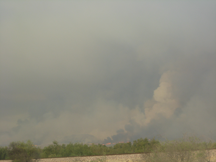 view larger image 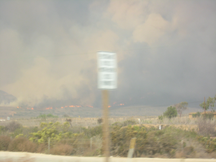 view larger image |
October 30, 2007: How the 2007 San Diego Fires Affected Me The pictures I have included are from the area surrounding Camp Pendleton. The wildfires affected my health more than anything else. After a few days of breathing ashy air, I nearly lost my voice for the next couple of days. In fact, I am still a little hoarse but have made a great recovery since returning to San Diego County. On Monday, October 22, students living in Warren were told to pack a bag in case of evacuation. My roommates and I decided to pack just in case, even though we felt no immediate threat. By Tuesday the 23rd, we all agreed to drive to Santa Barbara for the remainder of the week. The air quality was still somewhat low, but compared to San Diego it was a definite improvement. I took the pictures of this fire on my drive up to Santa Barbara. The air could literally be seen; the surrounding smoke was extremely thick and continued to pour from the burning flames. As I drove by, I could see parts of the reserve that had already burnt to a crisp; the soil was covered with a thick layer of ash. These pictures do not show the size of the flames in their entirety. Massive amounts of land were burning before my eyes. During the peak of the wildfire outburst, I received many phone calls from my family and concerned friends. My brother happens to live in Mira Mesa, so we kept in close contact throughout this ordeal. Although I did not suffer any great losses from this disaster, I was indirectly affected through a series of events. My deepest sympathies go out to all those who have suffered losses. 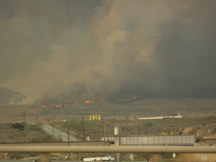 view larger image view larger image
 view larger image view larger image
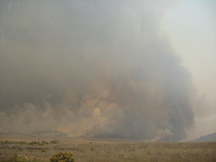 view larger image view larger image
 view larger image view larger image
(Elizabeth Vilchez, SIO15 student, 2007) | ||||||
 view larger image  view larger image |
October 27, 2007: Surfing During the October 2007 Wildfires I'm a professional surf photographer. I work for Surfing Magazine and Transworld Surf. Here are some of my fire photos I swam out to take when ash was raining down, my lungs are pretty taxed after all that smoke inhalation but the photos were worth it. Please send a short email to Ben at bendecamp@gmail.com, if you download these photos. 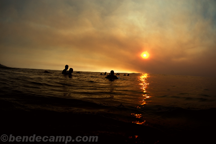 view larger image view larger image
 view larger image view larger image
 view larger image view larger image
(Ben DeCamp, SIO15 student, 2007) | ||||||
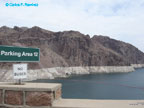 view larger image 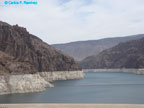 view larger image |
October 4, 2006: Low water level in Lake Mead These pictures were taken at the Hoover Dam on May 28, 2006. Lake Mead stores the water of the Colorado River and turbines at the base of the Hoover Dam provide power to Arizona, Nevada and California and water to Arizona, Nevada, California and Mexico. In 1983, Lake Mead reached its highest level, 1229ft, during an El Niño winter that caused unusually high precipitation the Western U.S.. The flood killed the submerged vegetation along the shoreline where we now see the "bathtub ring". During the El Niño winter 97/98, the water level rose again to more than 1210ft. It has been declining steadily since then and is now near its drought level of 1125ft. NASA's Earth observatory website notes that the lake level dropped by nearly 60ft within the last three years, due to weather and water usage. Such a low level was surpassed only in the late 1950ies and in 1965. check out plot. I just thought it was interesting that Earth is leaving a mark to remind us that fresh water on Earth is disapearing fast due to human activities. Most of Southern California's fresh water supply comes from the Colorado River, if I'm not mistaken. (Carlos F. Ramirez, ERTH15 student, 2006) | ||||||
 view larger image |
April 10, 2006: A rotating wall cloud associated with a tornado-warned storm near Union
City, Oklahoma (date of storm unknown to webmaster). This photo is not quite as spectacular as [other] photos posted, but it is pretty nice also, and I can vouch for the authenticity (since I was there). A friend of mine created this composite from three images. This cloud is several miles across and was slowly rotating. It was hanging from the edge of a large thunderstorm. Sometimes ones like this are called "motherships" for obvious reasons. (Jim Means,SIO/UCSD graduate student in the climate group) | ||||||
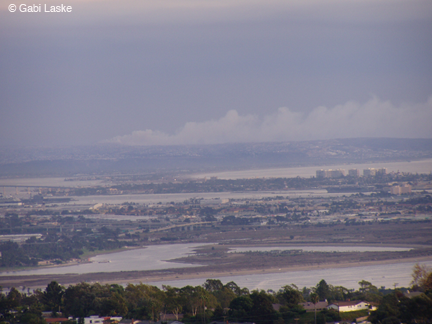 view larger image |
November 20, 2005: Fires in Baja driven by Santa Ana Winds Driven by Santa Ana winds, two fires in Baja California burnt more than 10,000 acres and sent large clouds westward. When winds shifted, polluted air spread throughout San Diego. The air pollution index increased to 60 and so went from good to moderate (50 and below is good; values for San Diego are usually below 40; during the 2003 Cedar Fire, El Cajon had values near 210/very unhealthy). The photo was taken Sunday afternoon on Mt. Soledad and shows the Coronado Bridge on the left center and the Hotel Del Coronado and other hotels on the center right. (Gabi Laske, ERTH15 instructor) | ||||||
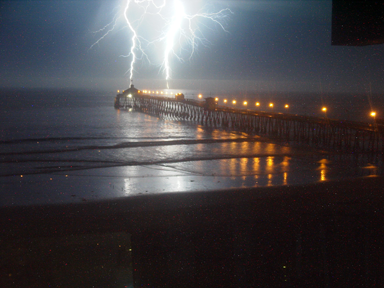 view larger image |
September 19, 2005: Thunder and lightning at the Imperial Beach Pier Over the last couple of years the ROADNet project has deployed multiple high resolution cameras throughout San Diego county that automatically take photos at pre-specified rates. These photos are transmitted to a real time database at SIO via the HPWREN project. The cameras operate 365-24/7. The September 19 storm was recorded by the cameras, and there is one great image that captures lightning striking the Imperial Beach pier. (Rob Newman, Web Master at IGPP) | ||||||
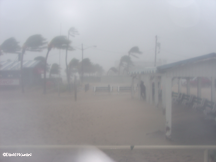 view larger image |
August 25, 2005: Katrina makes Landfall in Florida Katrina was a (wimpy) category 1 hurricane, with sustained wind speeds of 75 mph and a low pressure of 985 mBar, when it made landfall in Florida, 3.5 days prior to the landfall in Louisiana. Nevertheless, David's photo captured the awesome power even a weak hurricane has. David "rode out the storm" at the beach with a few TV reporters. (David Nourani, ERTH15 student, 2005) | ||||||
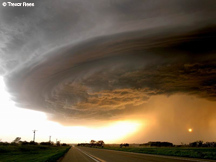 view larger image |
August, 2005: Hurricane Katrina ... or not These photos came to us through Trevor's mom. It turns out that these cool pictures circulate on the web and keep resurfacing whenever there is a new great storm. So, many were made believe that these pictures show Hurricane Katrina when she made landfall, but in fact, they do not (click here to get details at www.snopes.com). These photos show supercells in Nebraska and were taken in 2004 by storm chaser Mike Hollingshead. He has a great website that shows many other cool photos. (show me.) (Trevor Rees, ERTH15 student, 2005) 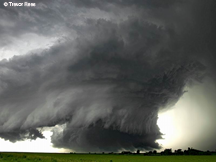 view larger image view larger image
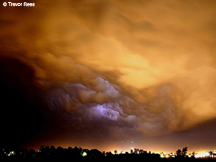 view larger image view larger image
| ||||||
 view larger image |
April 26, 2005: A sandstorm in Iraq ....speaking of urban legends. The snopes web site also hosts cools pictures of a sandstorm that hit Al Asad in Iraq. The pictures remind of some scenes in the movie "The Mummy" but this time, the pictures are real, no special effects on the computer! The storm was spawned near the border between Syria and Jordan and travelled at 60 mph. go to snopes.com (Gabi Laske, ERTH15 instructor) | ||||||
 view larger image |
October 04, 2004: Thunderstorm in Albuquerque, New Mexico This thunderstorm severely compromised air traffic in Albuquerque. Traveling to a meeting in the city, Gabi had just experienced a slightly rough landing when thunder and lightning started in the far distance. Some of her colleagues that arrived later circled for more than an hour before they could land. Landing in a thunderstorm is extremely dangerous because unpredictable microbursts can push planes downward. The famous Balloon Festival had to be cancelled for the next day. (Gabi Laske, ERTH15 instructor) | ||||||
October 26, 2003  view larger image  view larger image  view larger image |
|
||||||
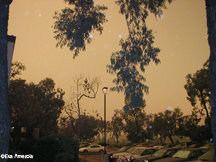 view larger image 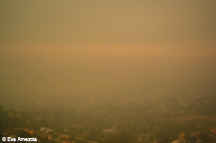 view larger image |
October 26, 2003: Effects of the Cedar Fire on La Jolla Skies Eva experienced the great 2003 fire disaster in San Diego county, that started early on October 26. Three fires raged (Otay Fire, Paradise Fire in Valley Center, Cedar Fire in S.D. back country) during severe Santa Ana weather. The shots show the eerie orange skies in La Jolla and Mt. Soledad, after the fire cloud was pushed westward by Santa Ana winds. (Eva Amezola, ERTH15 student, 2005)
| ||||||

















